Guide to the Museum of the Moving Image
nycgo.com staff 08/08/2017
Updated On: 09/26/2019
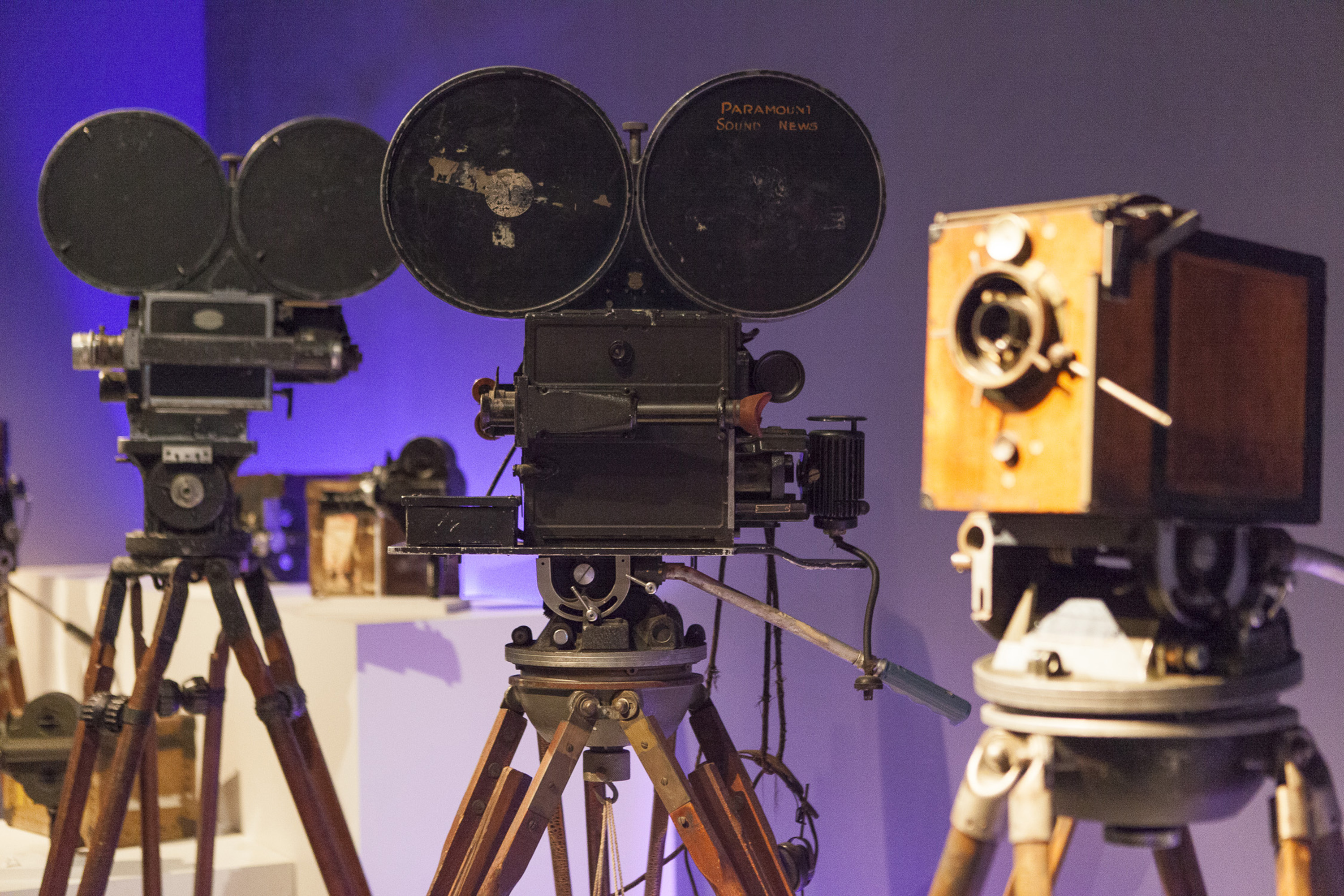
Photo: Marley White
Queens’ Astoria neighborhood was an important site in the early development of motion pictures: nearly 100 silent films were shot there in the 1920s. Today, it’s home to Kaufman Astoria Studios, where TV shows like New Amsterdam, Orange is the New Black and Sesame Street are made. That history makes it a fitting home for the Museum of the Moving Image —the only institution of its kind in the US dedicated to the history of movies and television, and their continuing societal impact.
The museum, affectionately known as MoMI, is packed with fascinating exhibitions and ever-changing programming. We’ll walk you through what you have to see so you don’t miss any of the action.
How to Get There Take the N or W subway train to 36 Ave., or the M or R to Steinway Street. The ride takes about 20 to 25 minutes from Midtown Manhattan.
Address 36-01 35th Ave., 718-777-6888, Astoria, Queens
Hours Wed.–Thu., 10:30am–5pm Fri., 10:30am–8pm (free admission: 4–8pm) Sat.–Sun., 10:30am–6pm
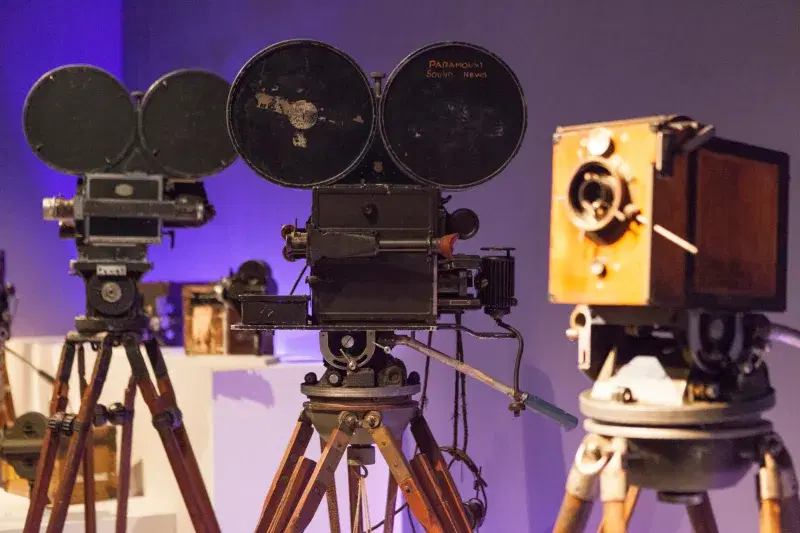
The Museum’s main exhibition, Behind the Screen , takes on the immense task of capturing the process and history of film and television. The two-floor display includes a mix of artifacts, information and interactive installations. For example, you might see an assortment of real motion picture cameras dating back to the late 1800s through today while also learning how the devices work. Visitors have a chance to record and play back their own movements—turning that footage into a flipbook, among the earliest moving-picture formats.
It would take a long time to walk readers through every notable artifact in Behind the Screen, but the following rundown of interesting items we saw during our visit may gave you an idea of the exhibition’s breadth and depth:
• Drive-in speakers, from the mid-century era when drive-in movies were a popular way for Americans to watch motion pictures. • Decades’ worth of licensed movie and TV merchandise, including a Get Smart lunchbox and an assortment of Star Trek figurines sure to delight many a nerd. Even Star Trek Barbie and Ken dolls! • Old film fan magazines, including issues of Film Fun (1915–1942) whose racy covers serve as a reminder that “sex sells” is not a new idea. • Costumes worn by Robin Williams in Mork & Mindy and Mrs. Doubtfire , boxing gloves worn by Robert De Niro as he trained for Raging Bull , a sweatshirt worn by Eddie Murphy in Beverly Hills Cop , and many other wardrobe items and props. • Set models for The Verdict and The Silence of the Lambs , among many others, revealing the intensive behind-the-scenes work that goes into every small detail of a movie. • Mutoscopes, coin-operated 19th–century devices that displayed moving pictures by attaching stills to a large wheel that users moved by turning a crank. • A display demonstrating how professionals edit live television, using the many camera angles from a Mets game as an example. • A slew of special-effects artifacts, including the mechanical Regan MacNeil puppet from The Exorcist that made possible the famous shot where the character’s head rotates 360 degrees. • A 1939 RCA TRK-9, the largest television the company sold before the United States entered World War II. The wood console is large and almost jukebox-sized, but the screen itself has roughly the proportions of a tablet computer.
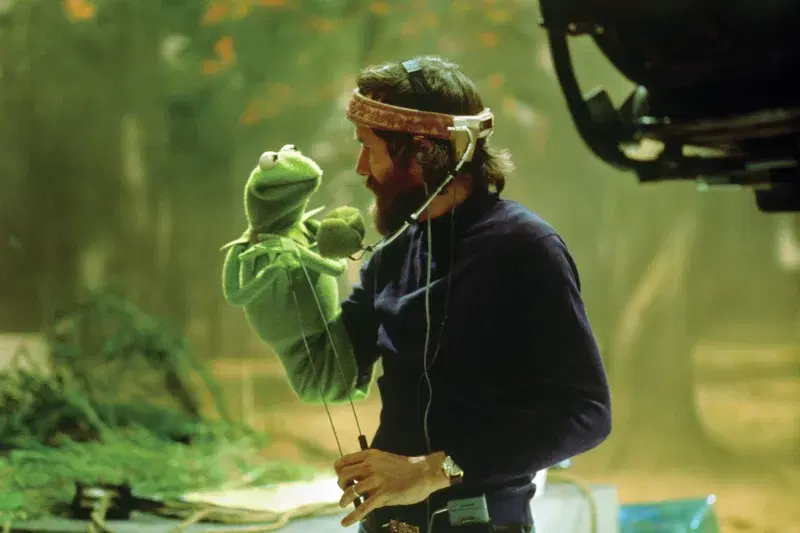
Courtesy, Museum of the Moving Image
The Jim Henson Exhibition The 2017 opening of the Jim Henson exhibition brought a renewed buzz to the museum. Painstakingly researched and organized, and with a huge collection of artifacts—many of which were donated by Henson’s family—it’s a comprehensive and fascinating look at the work and influence of the puppeteer, director and producer.
It traces his career from his early work on local television in Washington, DC—where, as a teenager, he created Sam and Friends , which pioneered his combination of the marionettes and puppets he named “Muppets”—through major projects like Sesame Street (still produced at the Kaufman Astoria studios next door) , The Muppet Show and motion pictures like Labyrinth and the Teenage Mutant Ninja Turtles . The exhibition includes a genuine Big Bird puppet from 1975—which really is quite large, and includes turkey and ostrich feathers—plus the opportunity to build your own Muppet and see what it looks like on camera, along with some of the sketches and storyboards that became some of Henson’s most memorable productions.
We were also fascinated by Henson’s funny, creative advertising work for companies like Red Diamond coffee , because the exhibition demonstrates how that work paved the way financially and creatively for the projects that eventually made him internationally famous.
Moving Image Café and Moving Image Store Have a coffee or a snack in the sleek, space age–style lobby café , and bring home movie-centric souvenirs (like vintage posters and coffee table books on film) from the gift shop .
• If you’re going to see the Henson exhibition, consider bringing headphones so you can hear the footage on some of the screens (there are also headphones available to rent for a small fee). • Check out MoMI’s website to see if you’re interested in any of the screenings in the mod-looking Redstone Theater or other special events while you’re in town. Recent happenings include a screening of a 70-millimeter print of 2001: A Space Odyssey as part of their “See It Big” weekend movie series. MoMI also hosts panel discussions with notable figures from the film world, matinee screenings for kids and interactive programs. • While it’s fun to look around the museum yourself, the institution also offers guided tours for the general public, students and corporate groups. • If you're looking for a place to eat afterward, check out legendary Astoria pizza joint Sac's Place . They recently moved next door to the museum at Kaufman Astoria Studios, into the space that was originally the commissary for the movie studio.
What's good in NYC? From coverage of the latest attractions in the five boroughs to deals on Broadway show tickets, incredible cuisine and more, our emails will make sure you never miss a thing.
* Required Fields
By clicking sign up, you are agreeing to the Terms and Conditions

Insider Picks: Top Things to Do in NYC Now
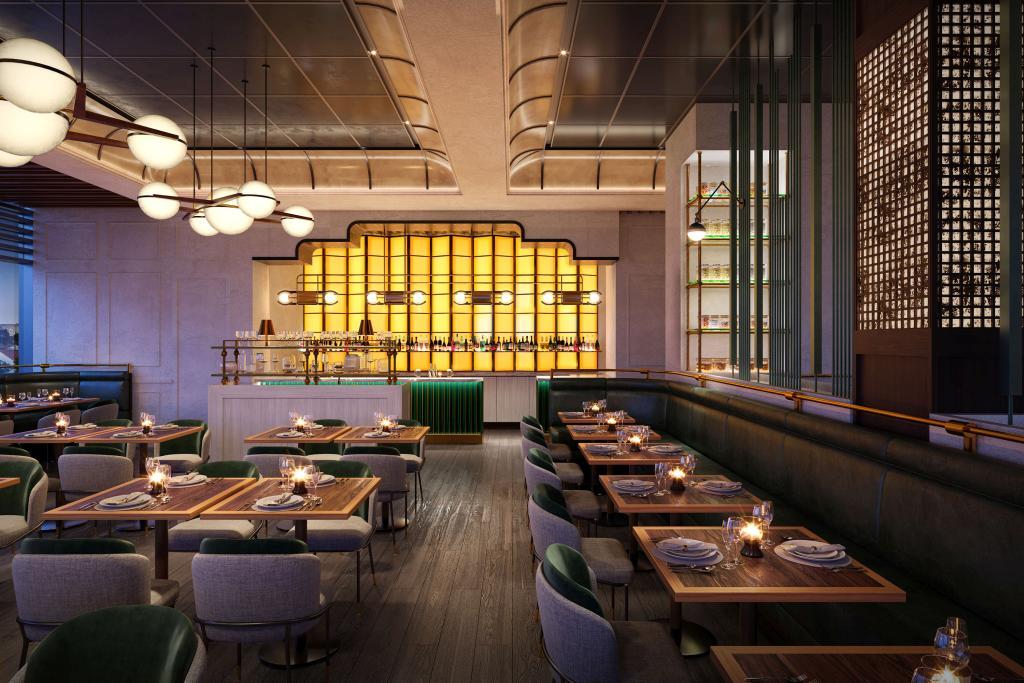
NYC’s Best New Restaurants in 2024
Dine at the City’s newest restaurants.
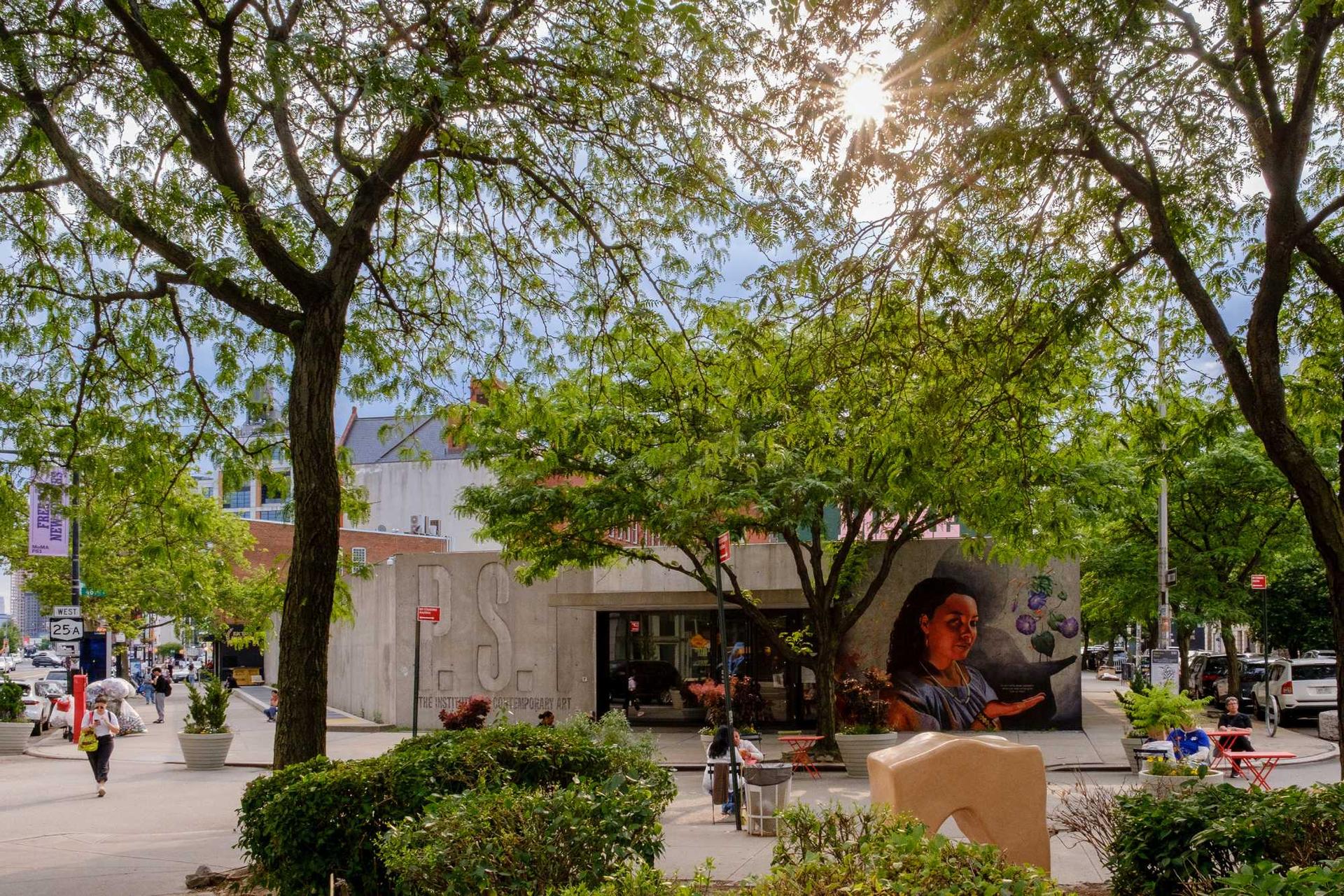
Free NYC Museums
These NYC museums and art-filled attractions are free today, on specific days or at certain times. Find one near you.
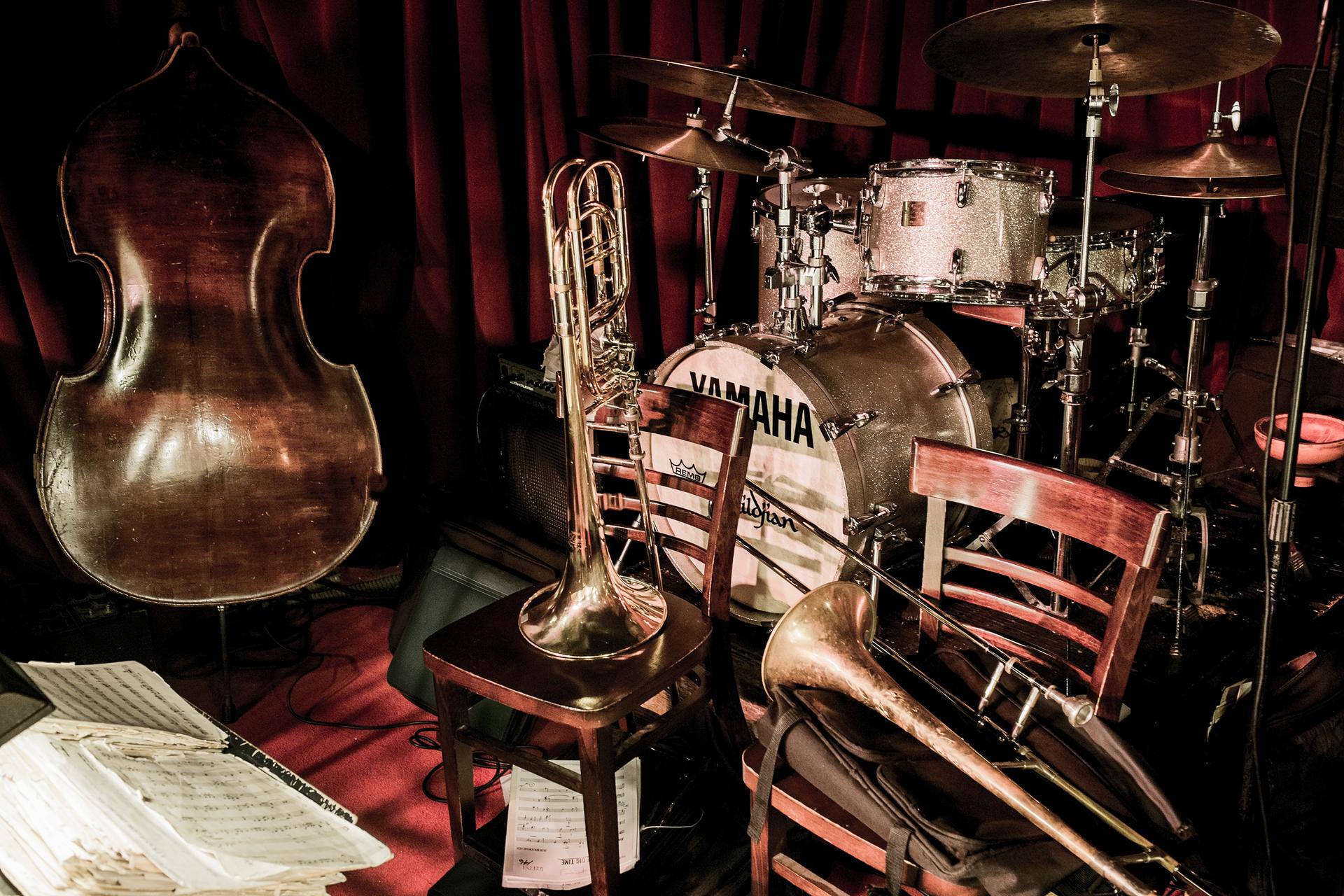
8 Manhattan Jazz Clubs to Check Out
Head to these classic nightspots to hear great live music and see jazz legends up close.
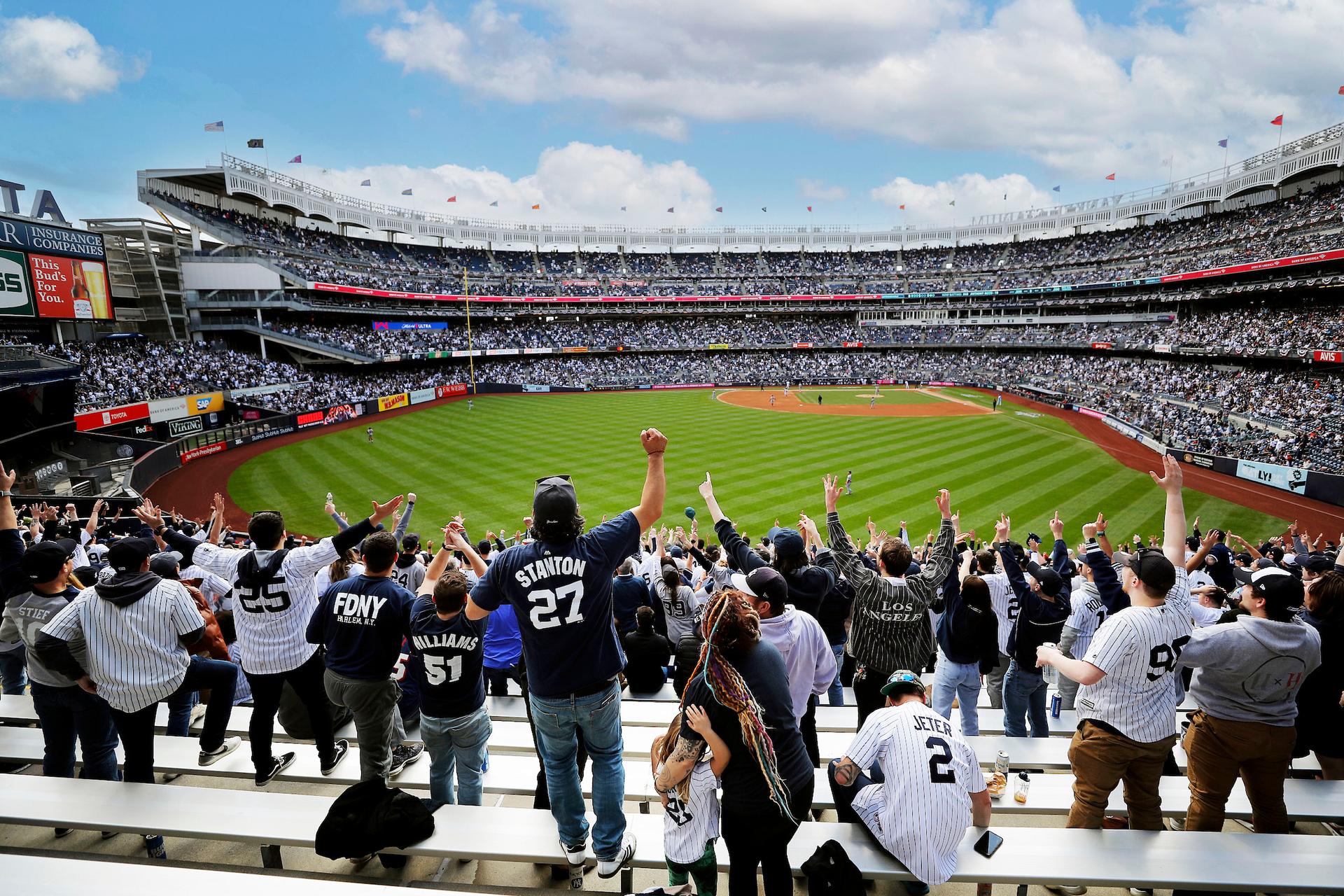
The Comprehensive Guide to Baseball in NYC
Heading to the ballpark? Let us take you there.
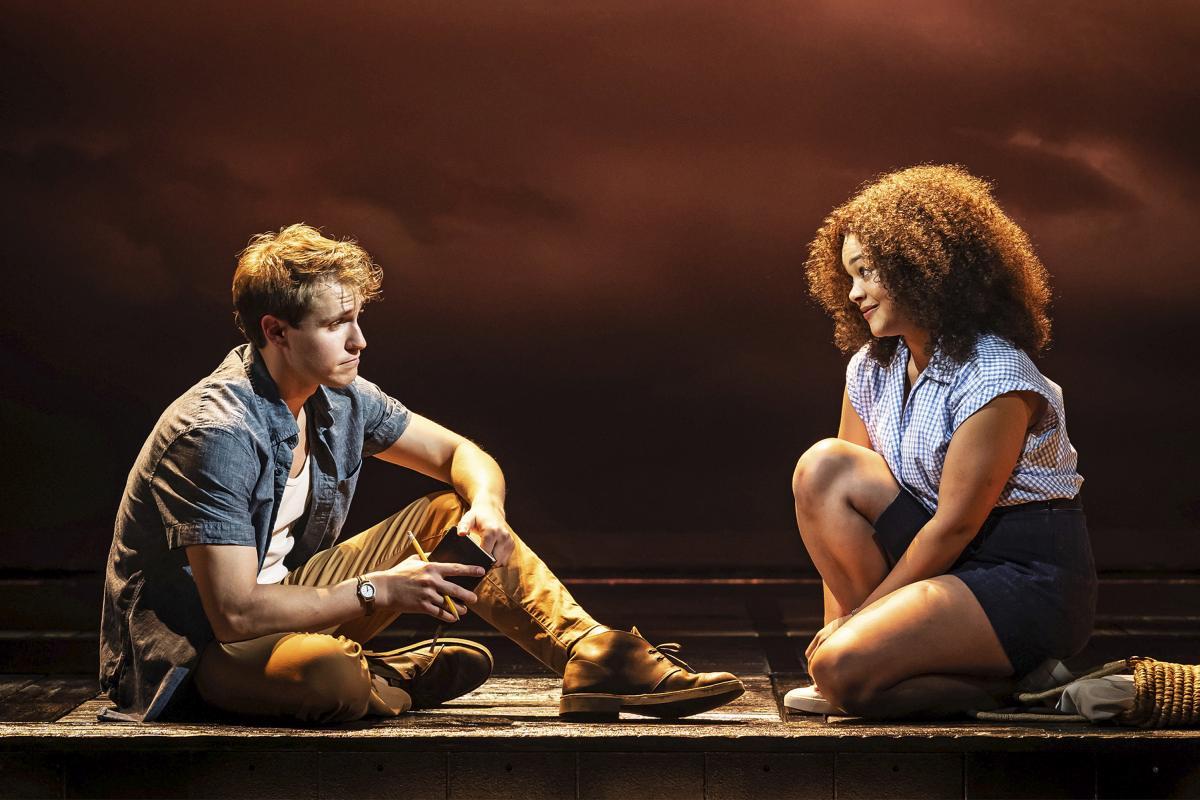
Every Show Coming to Broadway in Winter–Spring 2024
This season’s musicals and plays are opening on the Great White Way.
Search Museum of the Moving Image
- Search Site
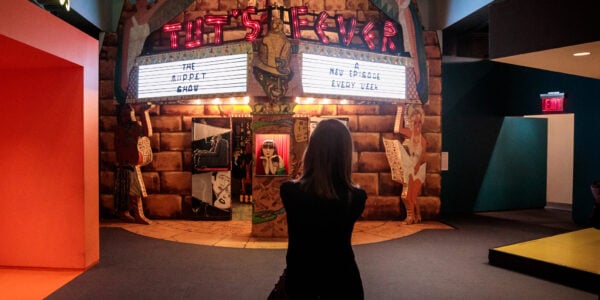
GENERAL ADMISSION
You can buy admission tickets online. Pick a date and time to visit the Museum. Timed-entry slots are released generally one-month prior. All sales are final and payments cannot be refunded.
Events Search and Views Navigation
Event views navigation.
Changing any of the form inputs will cause the list of events to refresh with the filtered results.
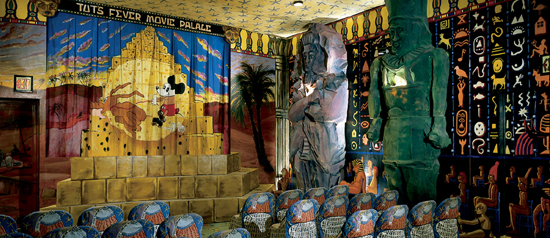
Tut’s Fever Movie Palace
Tut’s Fever is a working movie theater and art installation created by Red Grooms and Lysiane Luong, an homage to the ornate, exotic picture palaces of the 1920s
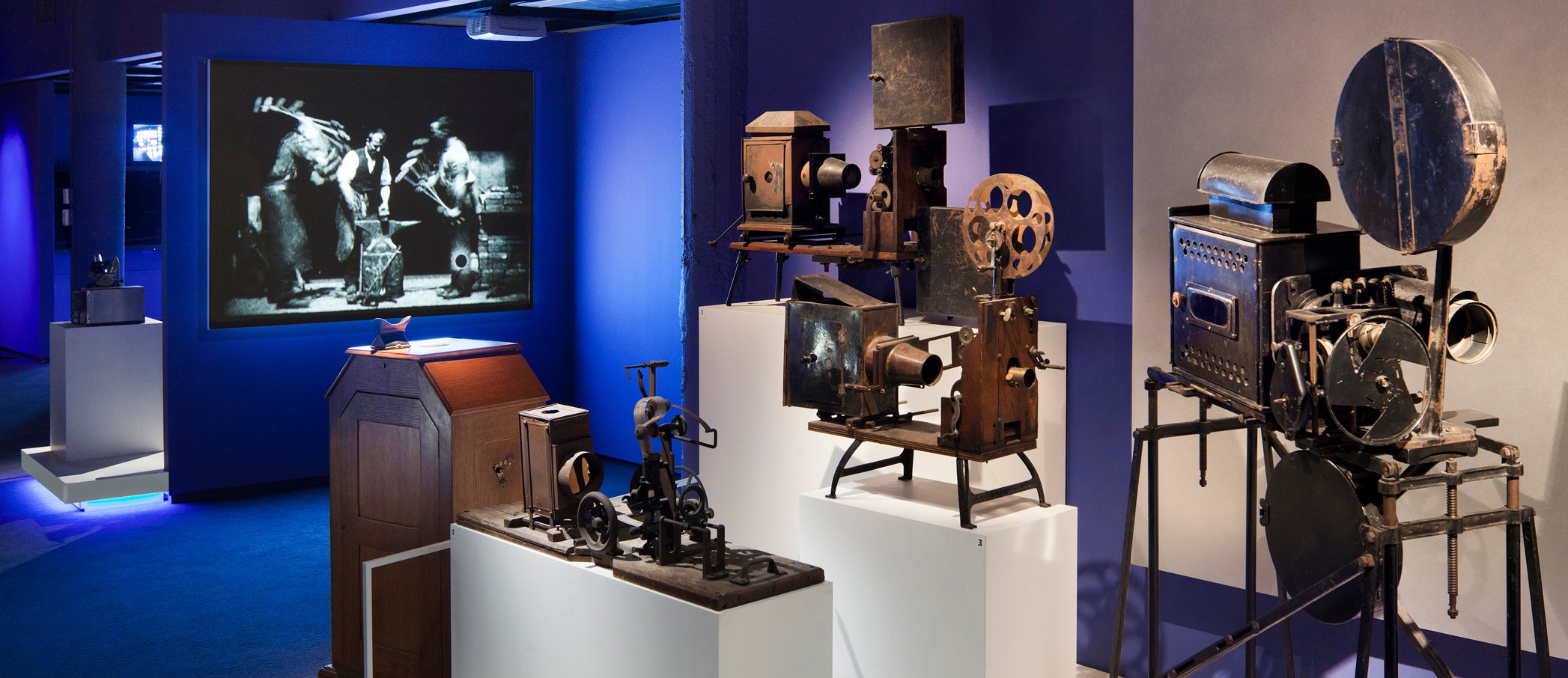
Behind the Screen
The Museum's core exhibition immerses visitors in the creative and technical process of producing, promoting, and presenting films, television shows, and digital entertainment.
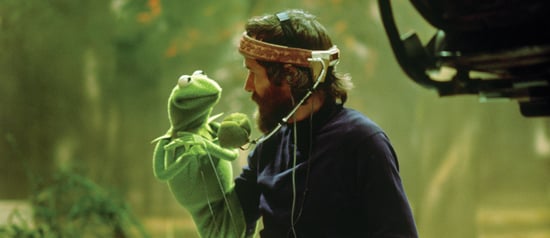
The Jim Henson Exhibition
This dynamic experience explores Jim Henson’s groundbreaking work for film and television and his transformative impact on culture.
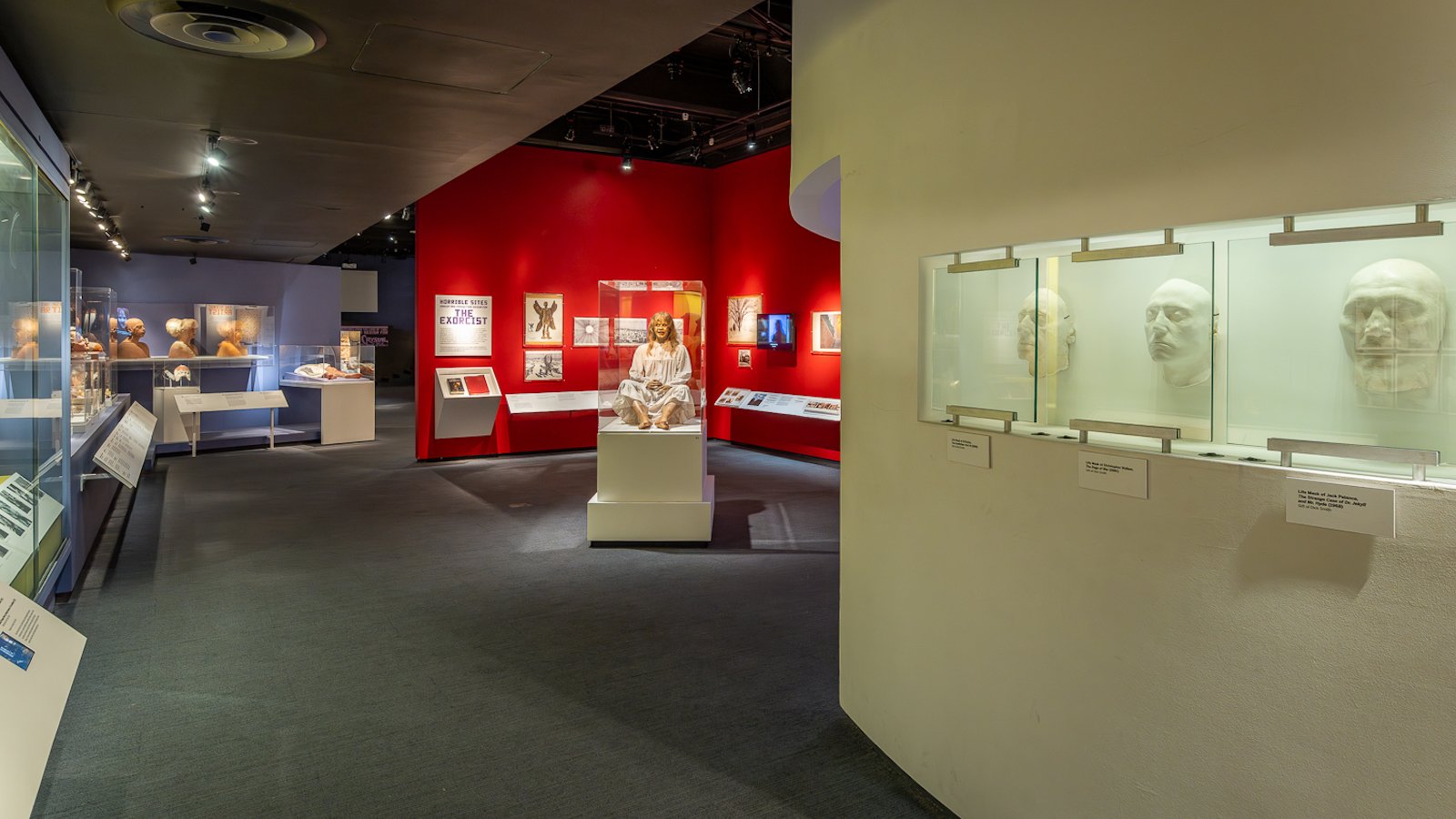
Horrible Sites: Makeup and Production Design for The Exorcist
With material drawn from MoMI’s permanent collection, this exhibit explores the film’s production and makeup design, detailing how a stylish townhouse in Georgetown, Washington, D.C., and an innocent young girl were transformed into sites of horror.
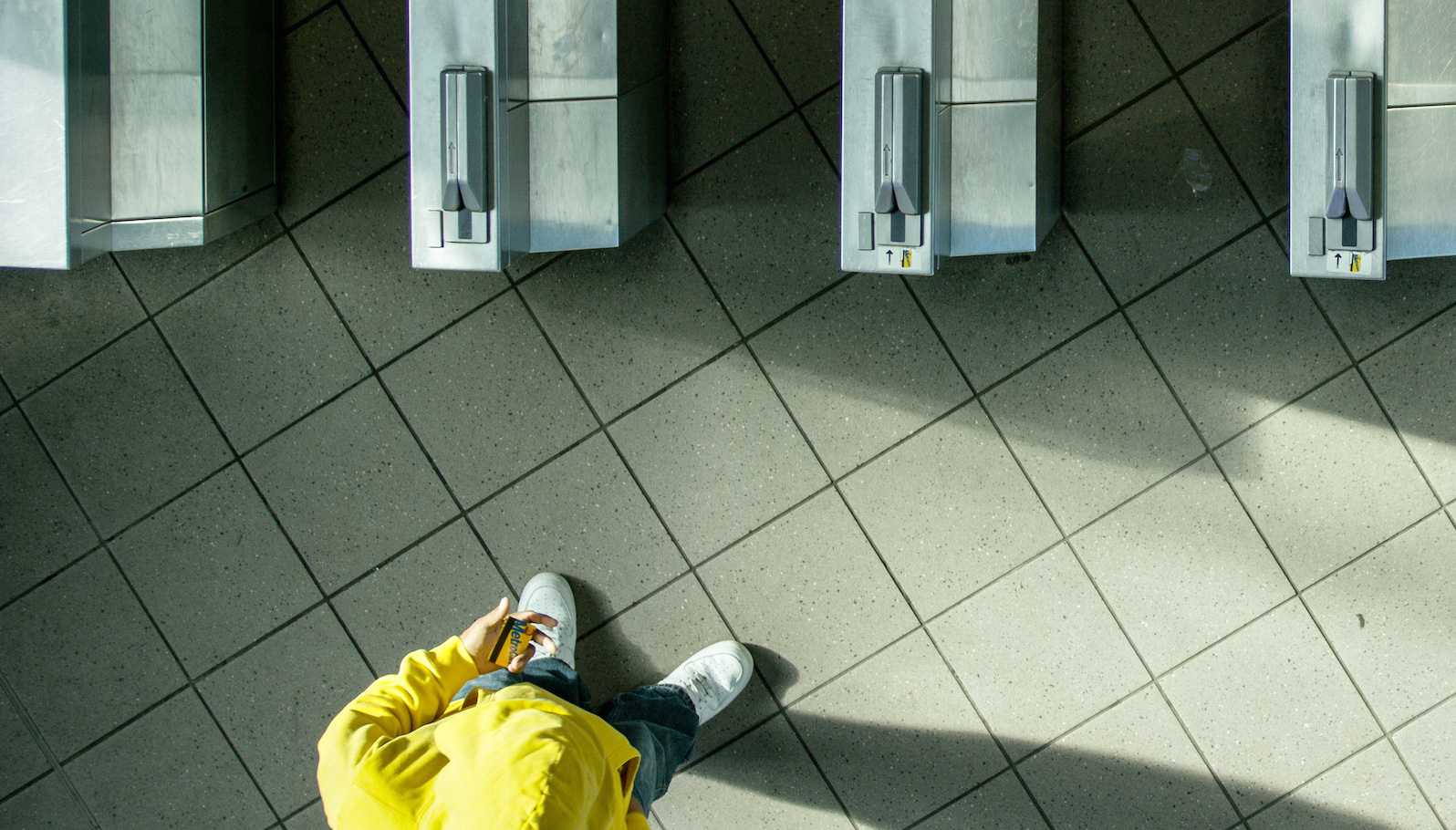
Mr. Yellow Sweatshirt
Shot in the Roosevelt Ave/Jackson Heights station, this installation video captures the tide of New Yorkers streaming through an entrance to the subway system in what the filmmakers refer to as a “collective ballet.”
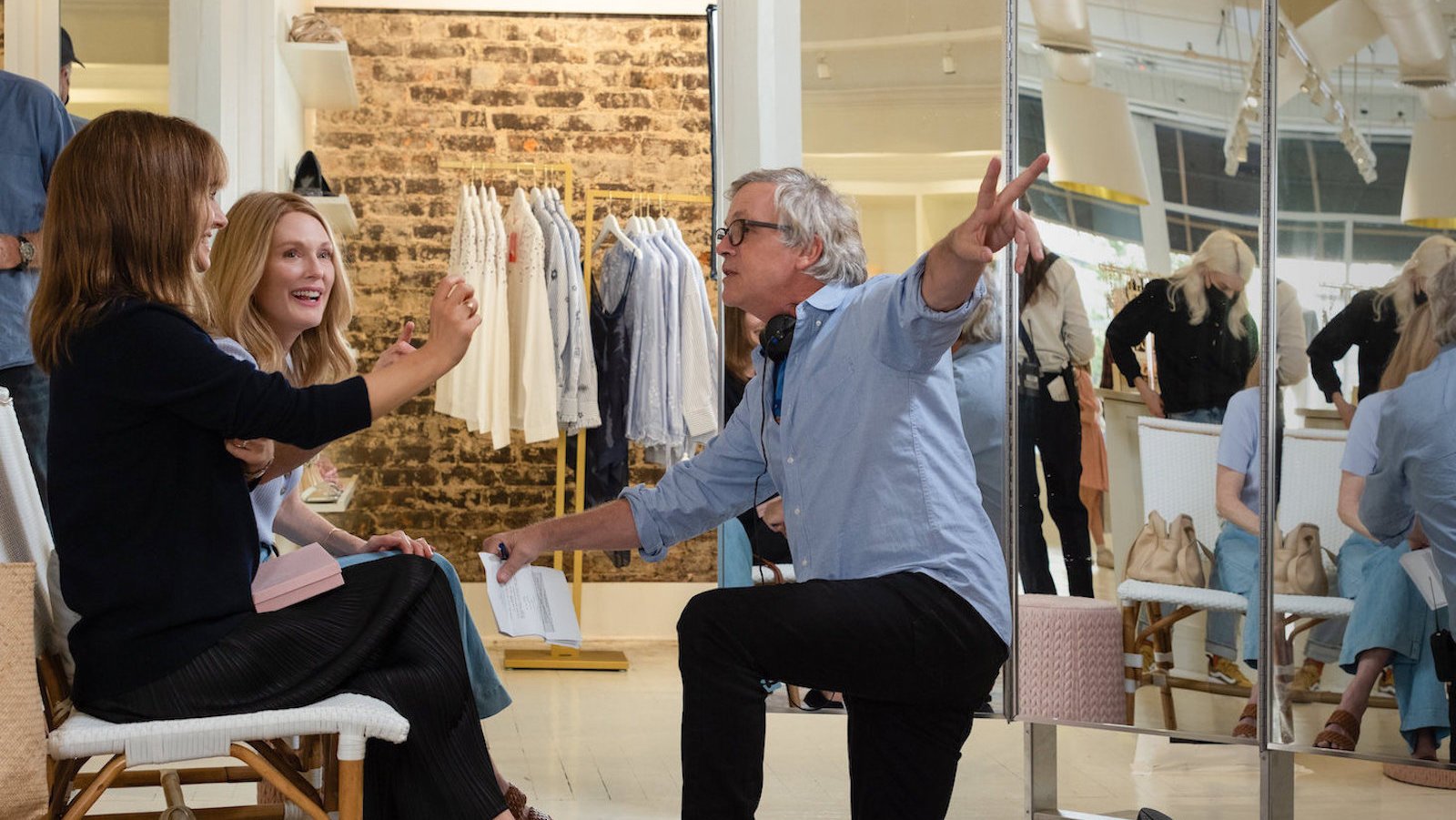
Reflected Forms: Story and Character in the Films of Todd Haynes
On the occasion of Todd Haynes’s May December , MoMI presents an exhibit with materials from the archives of filmmaker Todd Haynes, now part of the Museum’s collection, offering a glimpse into his process of transforming historical and cultural referents into formally ambitious, richly emotional films.
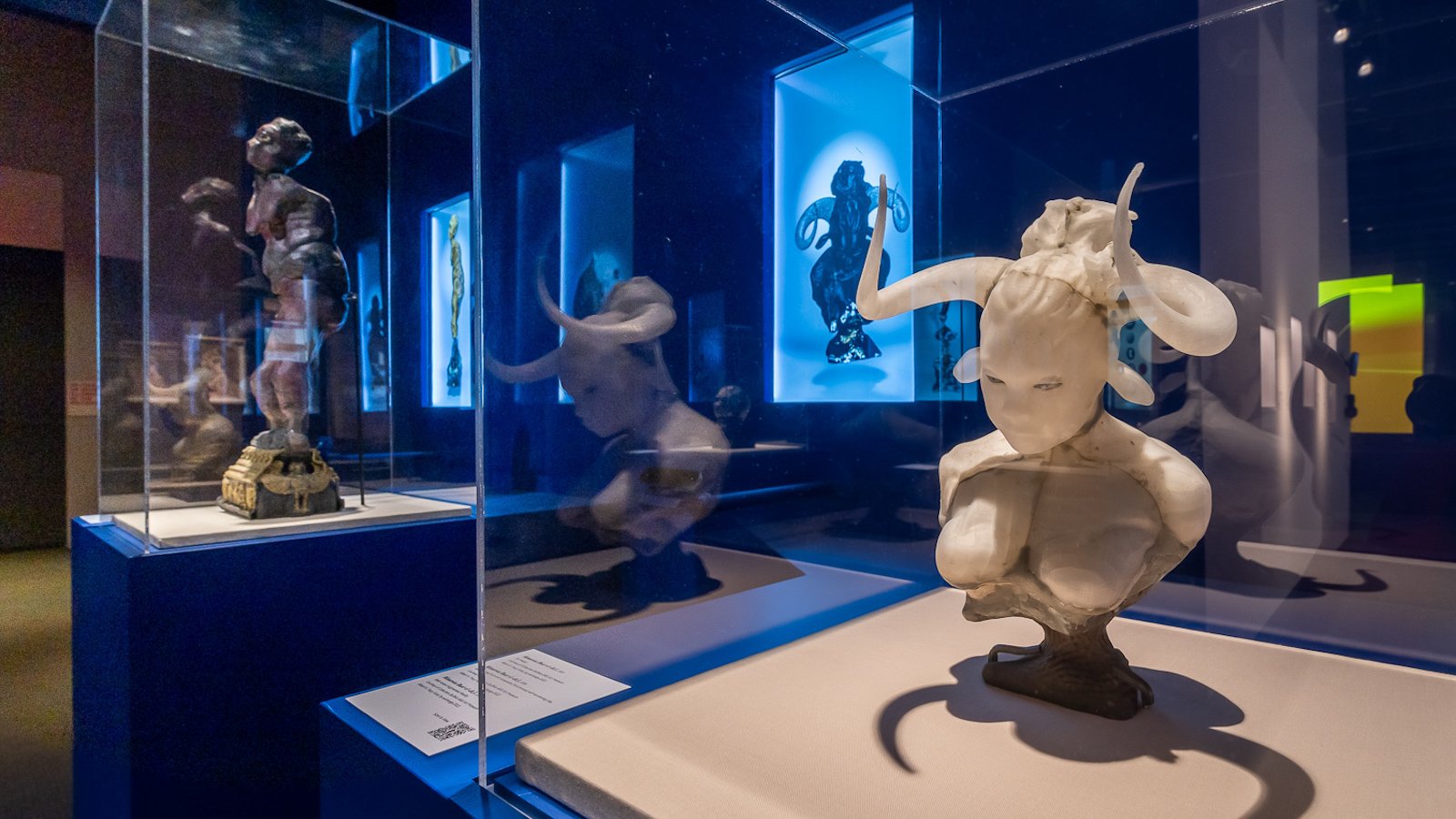
Auriea Harvey: My Veins Are the Wires, My Body Is Your Keyboard
The first major survey of the pioneering net-artist and sculptor Auriea Harvey features more than 40 of Harvey’s works from her career spanning nearly four decades.
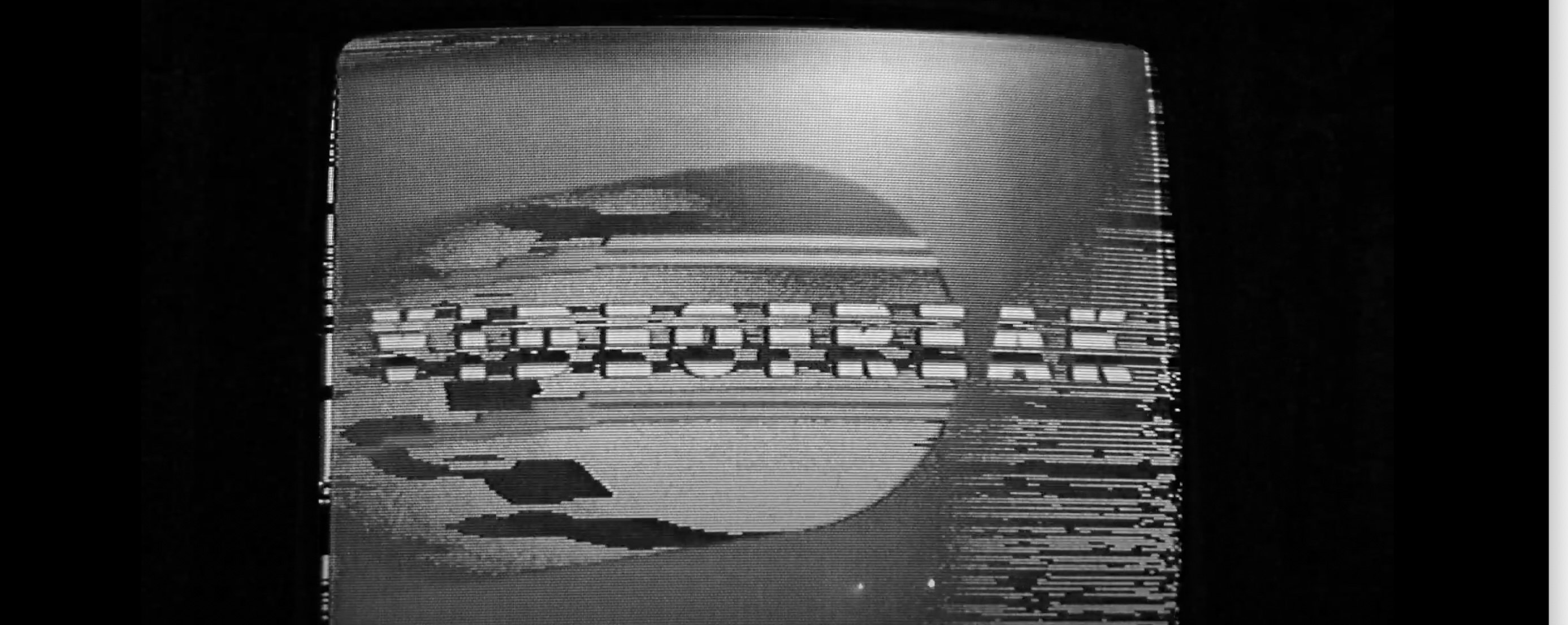
Allen Riley's Videofreak reimagines the arcade game experience by emphasizing the art of video manipulation over traditional gameplay elements like scorekeeping and end goals.

Tide Predictor
Tide Predictor is LoVid’s first code-driven generative artwork, a departure from a majority of their catalog, which centers experimentation with actual analog video. It will be displayed on the Museum's Schlosser Media Wall in the lobby.
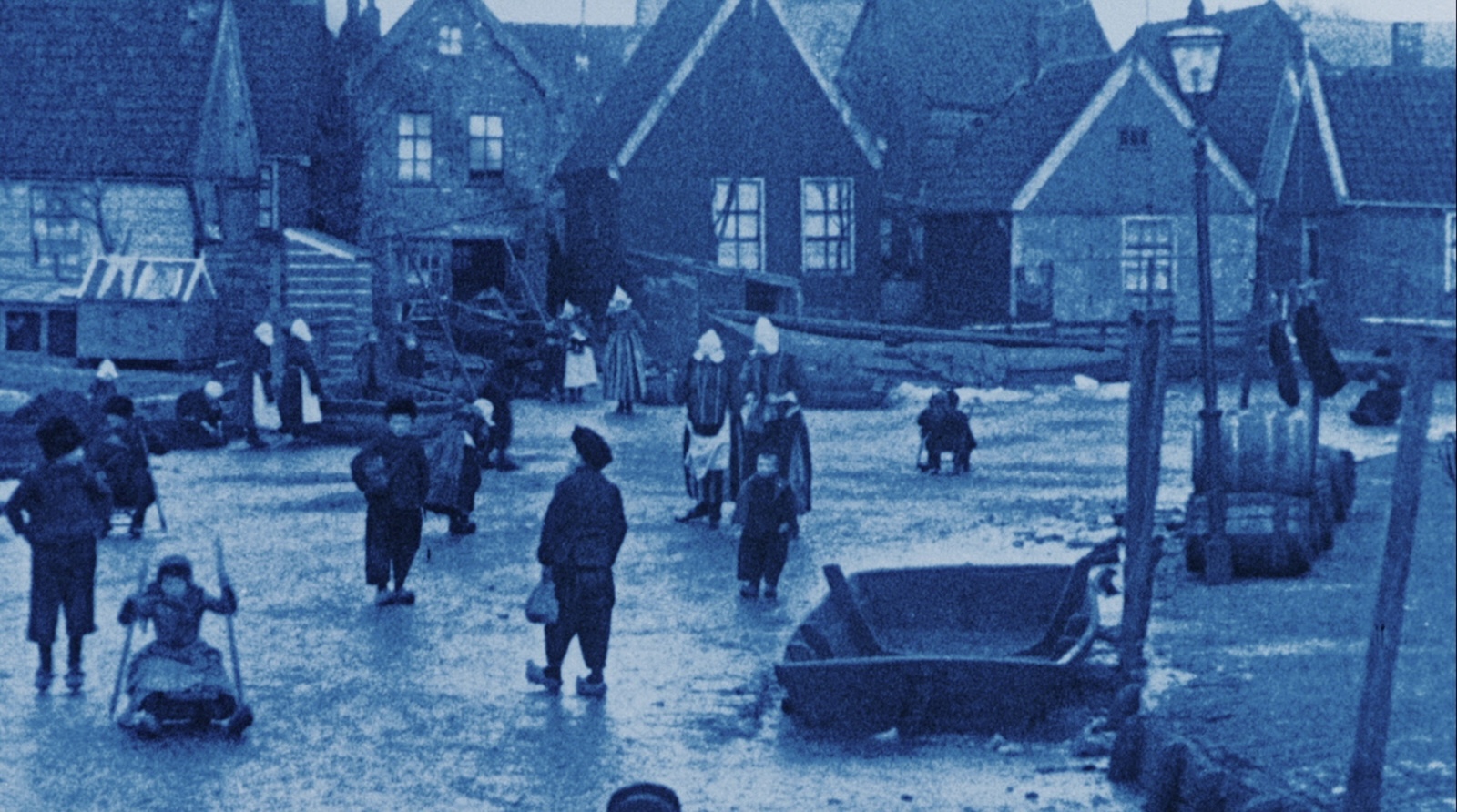
Fiona Tan: Footsteps
In this video installation drawn exclusively from films made between 1896 and the late 1920s, Tan pairs mesmerizing moments of people working over a century ago—sewing fishing nets, harvesting wheat, collecting chicken eggs, sorting oysters—with missives from her Australia-based father, read aloud by Scottish actor Ian Henderson.
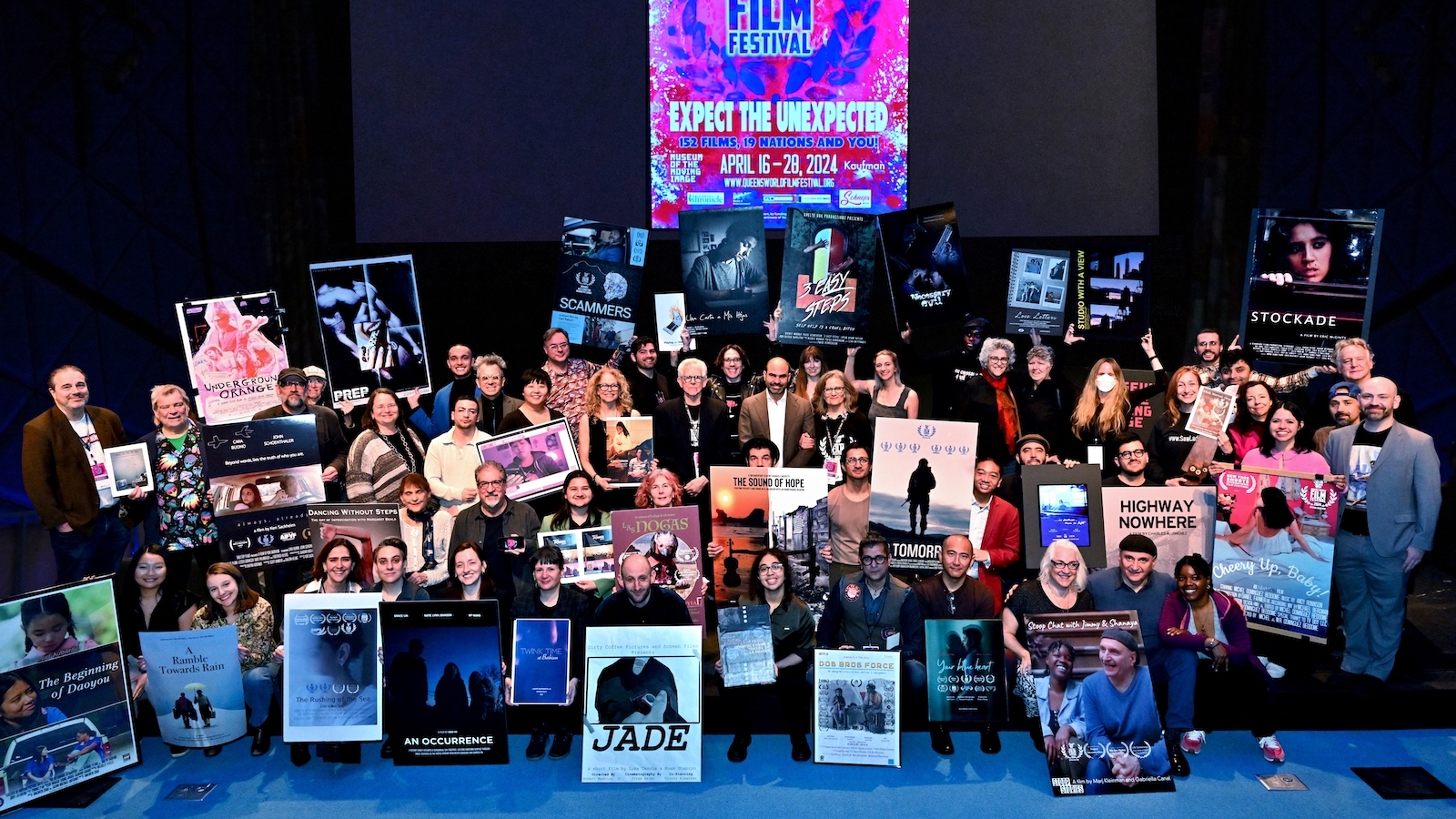
Queens World Film Festival 2024
The Queens World Film Festival (QWFF), organized by Katha and Preston Cato and their team of collaborators, is an annual festival that features screenings, industry panels, special events, and youth-oriented educational initiatives.
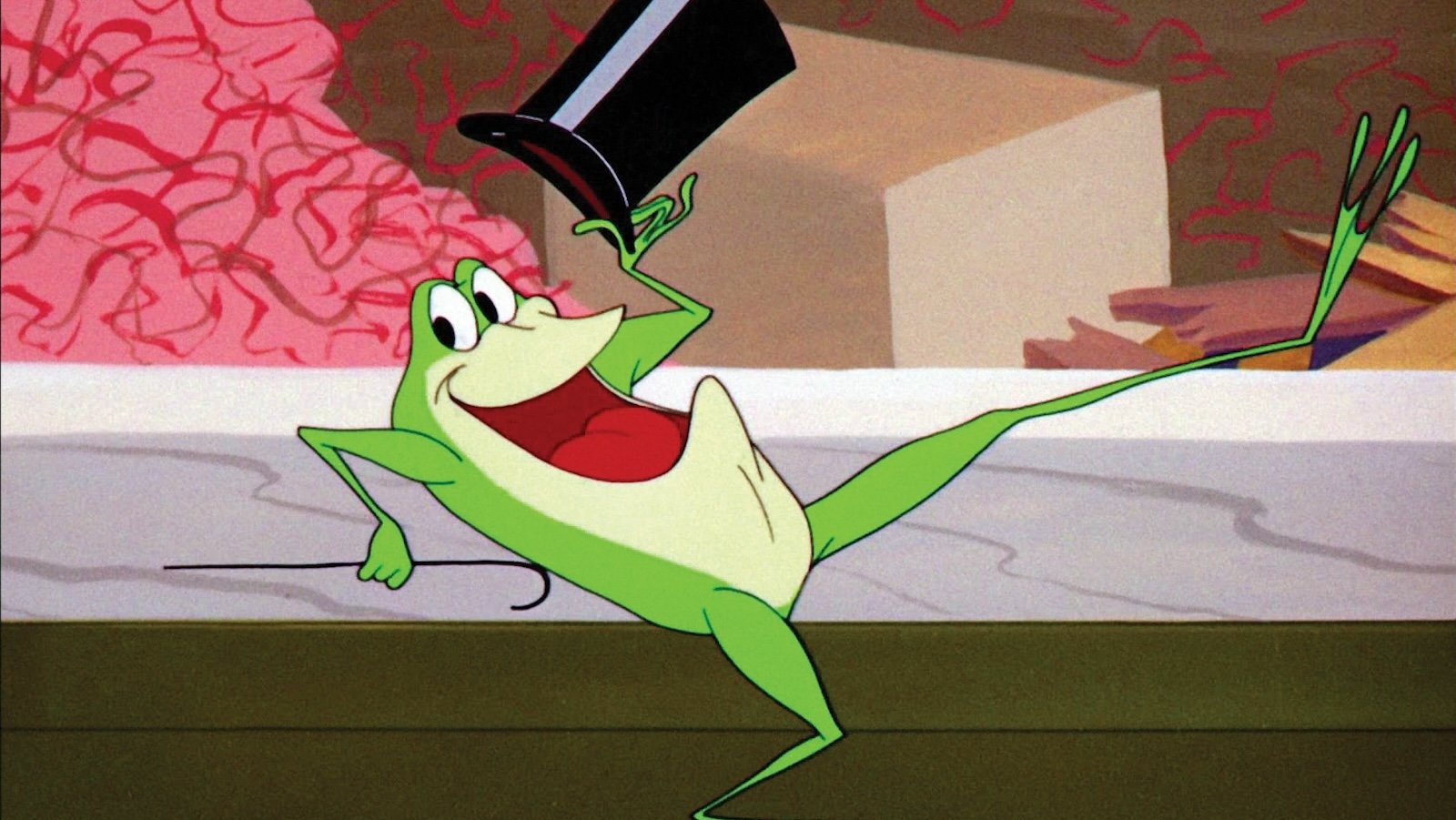
Classic Warner Bros. Cartoons
This selection of Looney Tunes and Merrie Melodies classics directed by Chuck Jones, Friz Freleng, Art Davis, and Bob Clampett spans the breadth of Warner Bros. Cartoons’ output during the post-WWII years. Screening 4/5, 4/7, and 4/19.
- Google Calendar
- Outlook 365
- Outlook Live
- Export .ics file
- Export Outlook .ics file
Museum of the Moving Image: A Complete Guide
Everything you need to know about NYC's museum about movies
:max_bytes(150000):strip_icc():format(webp)/5361-0043-HR1-5be4853fc9e77c0052041eec.jpg)
TripSavvy / Brakethrough Media
Museum of the Moving Image
The Museum of the Moving Image is all about what goes on the screen: film, television, and digital media. It's family friendly, and visitors of all ages will love learning about the history of films as well as what is happening in the contemporary world. In the exhibits you'll find everything from video games to props from classics and television shows.
Of course, a museum all about movies must show them. Every year the museum screens more than 400 films from historical favorites to boundary-breaking modern creations. The museum also hosts discussions, lectures, and other events. Whether you are a film buff or know nothing about the genre, you'll be fascinated by this attraction. There is no place like it.
The Museum of the Moving Image is a New York City institution. It was founded in 1988 and is the only museum in the United States focused solely on film, television, and digital media.
Even the building is historical. It is based in the former Astoria Studio Complex where Paramount filmed their East Coast masterpieces starting in 1920. During WWII the army used it to train soldiers (of course by showing them training films.) By 1977 it was a working studio again. In 1985 it became a museum.
In 2011 the institution underwent a $67 million expansion. Now it has a courtyard, cafe, and beautiful exhibition gallery. It's fun to hang out there long after you're finished browsing the museum.
What to See There
The museum has multiple permanent and temporary exhibits worth seeing. Here is what not to miss.
- Behind the Screen - This is in ongoing exhibit that explores what it actually takes to make a moving image. You'll learn how films are made, marketed, and shown in the movie theaters and your television screen at home. You'll also learn how film making has evolved from the nineteenth century to today.
- The Jim Henson Exhibition - One of the highlights of the museum, this exhibit is all about Jim Henson, the mastermind behind The Muppet Show , the Muppet movies, Sesame Street , Fraggle Rock , The Dark Crystal , and Labyrinth . You'll even see the real puppets used for the Kermit the Frog, Miss Piggy, Big Bird, and Elmo characters.
- Temporary Exhibits - The museum has a rotating list of exhibits that change every few months. Some delve behind the scenes of specific movies or television shows (The Mad Men exhibit a few years back was a big success.) Others look at periods in cinema history. Even if you've visited the museum many times you can learn something new in these limited-release shows. Check out the full schedule on the website .
- Screenings and Events - The museum hosts multiple screenings a week (or day!) depending on the time of year. You can see classics as well as never-before-released footage. Check the schedule often as events are updated regularly.
How to Visit
The museum is located at 36-01 35 Avenue (at 37th Street) in Astoria. The closest subway stations are the R/M at Steinway Street and N/W at 36 Avenue.
The museum is open Wednesday to Thursday from 10:30 am to 5:00 pm. On Friday it is open 10:30 am to 8:00 pm. On Saturday and Sunday the hours are 10:30 am to 6:00 pm.
Note: The museum is closed Monday and Tuesday except for certain holidays (check the website for details.) It is also closed on July Fourth or Independence Day.
Museum tickets cost $15 for adults; $11 for senior citizens and students with ID; $9 for youth (ages 3 to 17); and free for children under three.
The museum is free for everyone every Friday from 4:00 to 8:00 pm. The museum can get crowded during that time, so be prepared to be patient. The atmosphere is festive though, so it can be fun!
Tips for Visiting
- Visit on a Friday afternoon when admission is free.
- Check the schedule for film screenings. That is one of the best ways to experience the museum.
- Don't miss the shop where you can buy DVDs, souvenirs, movie posters, video games, and more.
- If you're visiting the museum on a weekend and traveling by subway, don't forget to check the MTA schedule to make sure your line is running smoothly.
Where to Eat
- The museum has a cafe on the main floor of the museum overlooking a courtyard. There are numerous tables and chairs where you can relax after you browse the exhibits. The cafe sells an assortment of baked goods and delicious sandwiches.
- Astoria is known for its diverse food scene, and you can enjoy Croatian, Columbian, Egyptian, Venezuelan, Thai, Brazilian cuisine and more. The neighborhood is known for its Greek food. Check out this guide to the best Greek restaurants in Astoria to find out where to go.
- Near the museum is the Bohemian Hall & Beer Garden where your entire family can sprawl out around a picnic table and enjoy German sausages and beer (for the adults!) This is an especially fun spot if the weather is nice.
All About the Jardin des Tuileries in Paris
Warner Bros. Studio Tour Hollywood
Spend the Night at These 10 Museums
Top Entertainment Museums in Los Angeles
The Top 19 Things to Do in Atlanta
The GRAMMY Museum
The 10 Best New York City Museums
Disney Magic - Western Mediterranean Cruise Travel Log
15 Terrific Day Trips From London
The 11 Best Museums to Visit in Boston
The Complete Guide to the Museum of Modern Art in New York City
The 6 Best New Museums in Paris: Innovative Spaces
Free Museums and Free Admission Days in Brooklyn
All About the Yves Saint Laurent Museum in Paris
Hollywood & Highland Center
The Louvre Museum in Paris: A Complete Guide for Visitors
THE 10 BEST Moscow Museums
Museums in moscow.
- Specialty Museums
- Art Galleries
- Art Museums
- History Museums
- Children's Museums
- Science Museums
- Military Museums
- Natural History Museums
- Observatories & Planetariums
- 5.0 of 5 bubbles
- 4.0 of 5 bubbles & up
- 3.0 of 5 bubbles & up
- 3rd Transport Ring (TTK)
- District Central (TsAO)
- Garden Ring
- Boulevard Ring
- Good for a Rainy Day
- Budget-friendly
- Good for Kids
- Good for Big Groups
- Hidden Gems
- Good for Couples
- Adventurous
- Honeymoon spot
- Good for Adrenaline Seekers
- Things to do ranked using Tripadvisor data including reviews, ratings, photos, and popularity.

1. State Tretyakov Gallery

2. Moscow Kremlin
3. Tsaritsyno Museum-Reserve
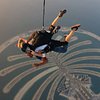
4. Armoury Chamber

5. Kolomenskoye Historical and Architectural Museum and Reserve

6. The Museum of Cosmonautics

7. Kuskovo Estate

8. Pushkin State Museum of Fine Arts
9. New Tretyakov Gallery

10. State Darwin Museum
11. Diamond Fund (Almazny Fond)
12. Jewish Museum and Tolerance Center
13. Experimentanium Museum of Entertaining Sciences
14. Museum of Soviet Arcade Machines
15. Art Gallery of the European and American Countries of the XIX-XX centuries

16. Muzeon Art Park
17. Mikhail Bulgakov State Museum
18. Orlov Paleontological Museum
19. Museum-Diorama Tsar-Layout
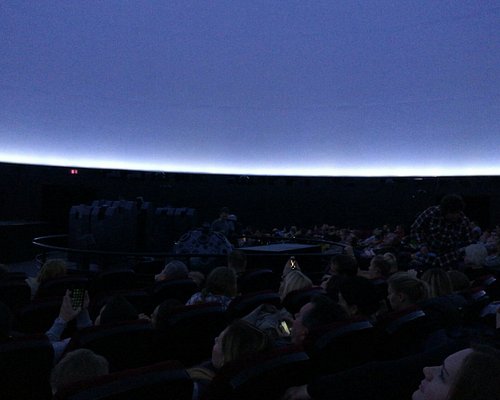
20. Moscow Planetarium
21. Historical Park Russia - My History
22. Entertainment Center Arbat 16
23. Bunker-42 Cold War Museum at Taganka
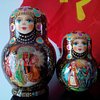
24. The State A.S. Pushkin Museum
25. Museum Moskovskiy Transport

26. Novospasskiy Monastery

27. Victor Vasnetsov House Museum
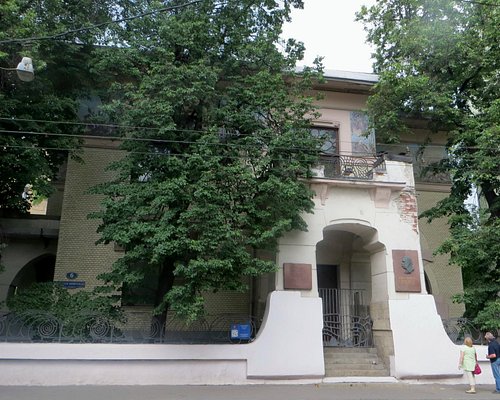
28. Gorky's House (Ryabushinsky Mansion)
29. Artplay Design and Architecture Center

30. Borodino Battle Museum Panorama

What travelers are saying

- State Tretyakov Gallery
- Moscow Kremlin
- Tsaritsyno Museum-Reserve
- The Museum of Cosmonautics
- Armoury Chamber
- Museum-Diorama Tsar-Layout
- Victor Vasnetsov House Museum
- Museum Moskovskiy Transport
- Kolomenskoye Historical and Architectural Museum and Reserve
- Museum in the Dark Sensorium
- Art Gallery of the European and American Countries of the XIX-XX centuries
- Kuskovo Estate
- Muzeon Art Park
- Jewish Museum and Tolerance Center
- Orlov Paleontological Museum
- Novospasskiy Monastery
- Historical Park Russia - My History
- Experimentanium Museum of Entertaining Sciences
- Mikhail Bulgakov State Museum
- Museum of Soviet Arcade Machines
- Entertainment Center Arbat 16
- Bunker-42 Cold War Museum at Taganka
- Museum of Illusions
- Museum of Death
Three decades after the Soviet era, this Moscow street echoes what was.
And hints where russia is heading., welcome to tverskaya street.
MOSCOW — Thirty years ago, the Soviet Union ceased to be. The flag was lowered for the last time on Dec. 25, 1991. That moment still raises deep questions for the U.S.S.R.’s heirs: “Who were we as Soviets, and where are we going as Russians?”
Many of the answers can be found on Moscow’s main thoroughfare — named Gorky Street, after writer Maxim Gorky, from 1932 to 1990, and renamed Tverskaya Street, a nod to the ancient city of Tver, as the Soviet Union was awash in last-gasp reforms.
It was the Soviet Union’s display window on the bright future that Kremlin-run communism was supposed to bring. It was where the KGB dined, the rich spent their rubles, Vladimir Lenin gave speeches from a balcony, and authorities wielded their power against one of the most famous Soviet dissidents, Alexander Solzhenitsyn.

In the 1990s, Tverskaya embodied the fast-money excesses of the post-Soviet free-for-all. In later years, it was packed with hopeful pro-democracy marchers. And now , under President Vladimir Putin, it is a symbol of his dreams of reviving Russia as a great power, reliving past glories and crushing any opposition to his rule.
Join a tour of Moscow’s famed Tverskaya Street.
Hotel National: Where the Soviet government began
The window in Room 107 at the Hotel National faces Red Square and the Kremlin. It offers a perfect view of Lenin’s tomb — fitting, since he was Room 107’s most famous guest.
The Kremlin was damaged during the Russian Revolution in 1917. So Lenin and his wife moved into Room 107 for seven days in March 1918, making the hotel the first home of the Soviet government.

The Hotel National in Moscow, from top: Artwork in the Socialist Realist style — which artists were ordered to adopt in the 1930s — still adorns the hotel; Elena Pozolotina has worked at the hotel since 1995; the hotel, which contains a restaurant, was built in 1902; the National has hosted notable guests, including Soviet leader Vladimir Lenin, then-Sen. Barack Obama (D-Ill.) and actor Jack Nicholson. (Photos by Arthur Bondar for The Washington Post)
The National, built in 1902 during the era of Imperial Russia, also accommodated other Soviet leaders, including Leon Trotsky and Felix Dzerzhinsky, chief of the secret police. The building continued to be used by the Soviet government as a hostel for official party delegates and was renamed First House of Soviets in 1919.
Guests can now stay in the same room Lenin did for about $1,300 a night. In more recent years, the hotel has hosted notable guests including Barack Obama (when he was a senator) and actor Jack Nicholson.
“This hotel feels a little like a museum,” said Elena Pozolotina, who has worked at the National since 1995.
“We have rooms that look onto Tverskaya Street, and we always explain to guests that this is the main street of our city,” Pozolotina said. “This corner of Tverskaya that we occupy, it’s priceless.”
Stalin’s plan: ‘The building is moving’
When Soviet leader Joseph Stalin demanded a massive redevelopment of Moscow in 1935, an order came to transform modest Gorky Street into a wide, awe-inspiring boulevard.
Engineer Emmanuel Gendel had the job of moving massive buildings to make way for others. Churches and monasteries were blown up, replaced by newspaper offices and a huge cinema.
The Moscow Central Eye Hospital was sheared from its foundation, rotated 97 degrees, jacked up, hitched on rails and pushed back 20 yards — with surgeons operating all the while, or so official media reported at the time.

Gendel’s daughter, then about 8, proudly stood at a microphone, announcing: “Attention, attention, the building is moving.” Tatiana Yastrzhembskaya, Gendel’s granddaughter and president of the Winter Ball charity foundation in Moscow, recalls that Gendel extolled communism but also enjoyed the rewards of the elite. He drove a fine car and always brought the family the best cakes and candies, she said.
The largest Gorky Street building Gendel moved was the Savvinskoye Courtyard. The most difficult was the Mossoviet, or Moscow city hall, with a balcony where Lenin had given speeches. The building, the former residence of the Moscow governor general, had to be moved with its basement. The ground floor had been a ballroom without central structural supports.

Moving buildings on Gorky Street in 1940, from left: A mechanic at a control panel regulates the supply of electricity while a house is being moved; a postal worker passes a moving house; a specialist unwinds a telephone cable during a building move to maintain uninterrupted communication; 13 rail tracks were placed under a house, on which 1,200 metal rollers were laid. (Photos by RGAKFD)
Gendel’s skills were used all over the U.S.S.R. — straightening towers on ancient mosques in Uzbekistan, inventing a means to drag tanks from rivers during World War II and consulting on the Moscow Metro.
Like many of the Soviet Union’s brightest talents, Gendel found that his freedom was tenuous. His ex-wife was called by the KGB internal spy agency in 1937 and asked to denounce him. She refused, and he avoided arrest.

“I believe he was not arrested and sent to the camps because he was a unique expert,” said Yastrzhembskaya. World War II, known in Russia as the Great Patriotic War, interrupted the Master Plan for Gorky Street.
Aragvi restaurant: A haunt of the KGB
In the 1930s, the head of the elite NKVD secret police, Lavrenty Beria, one of the architects of the Stalin-era purges, ordered the construction of a state-owned restaurant, Aragvi, to showcase food from his home republic of Georgia.
One night, NKVD agents descended in several black cars on a humble Georgian canteen in Moscow that Beria had once visited. The agents ordered the chef, Longinoz Stazhadze, to come with them. The feared NKVD was a precursor to the KGB.
Stazhadze thought he was being arrested, his son Levan told Russian media. He was taken to Beria, who said that he had agreed with “the Boss” (Stalin) that Stazhadze would run Aragvi. Stazhadze had grown up a peasant, sent to work in a prince’s kitchens as a boy.

Aragvi opened in 1938. It was only for the gilded set, a reminder that the “Soviet paradise” was anything but equitable. The prices were astronomical. It was impossible to get a table unless the doorman knew you or you could pay a hefty bribe.
Aragvi, at No. 6 Tverskaya, was a favorite of the secret police; government officials; cosmonauts and pilots; stars of theater, movies and ballet; directors; poets; chess masters. Beria reputedly dined in a private room. Poet Sergei Mikhalkov said he composed the lyrics of the Soviet national anthem while sitting in the restaurant in 1943.
It was privatized in the 1990s and struggled, before closing in 2002. It reopened in 2016 after a $20 million renovation. But the new Aragvi closed abruptly in 2019 amid reports of a conflict between its owner and the building managers.
“You put your entire soul into cooking,” said the former head chef, Nugzar Nebieridze, 59, celebrated for his khinkali, a meaty dumpling almost the size of a tennis ball. He was devastated to find himself unemployed. But other doors opened. He now prefers to travel, giving master classes around Russia.
Stalin’s funeral: A deadly street crush that never officially happened
On March 6, 1953, the day after Stalin died of a stroke, an estimated 2 million Muscovites poured onto the streets. They hoped to catch a glimpse of his body, covered with flowers and laid out in the marbled Hall of Columns near Red Square.
Yulia Revazova, then 13, sneaked from her house with her cousin Valery without telling their parents. As they walked toward Pushkin Square, at one end of Gorky Street, the procession turned into a scene of horror. They saw people falling and being trampled. Some were crushed against metal fences. Valery, who was a few years older, grabbed Yulia by the hand and dragged her out of the crowd.

“He held my hand really tight and never let it go, because it was pure madness,” she recalled recently. “It took us four or five hours to get out of there. People kept coming and coming. I couldn’t even call it a column; it was just an uncontrollable mass of people.”
“I still have this feeling, the fear of massive crowds,” added Revazova, 82. “To this day, if I see a huge group of people or a really long line, I just cross the street.”
Neither Revazova nor her cousin knew about Stalin’s repressions.
“People were crying. I saw many women holding little handkerchiefs, wiping away tears and wailing,” she recalled. “That’s the psychology of a Soviet person. If there is no overarching figure above, be it God or Lenin, life will come crashing down. The era was over, and there was fear. What will we do without Stalin?”
Officials never revealed how many people died that day. The Soviet-approved archival footage of the four days of national mourning showed only orderly marches and memorials.
No. 9: The ruthless culture minister
The Soviet culture minister, the steely Yekaterina Furtseva, was nicknamed Catherine the Third, after the forceful Russian Empress Catherine the Great. Furtseva destroyed writers, artists or anyone else who challenged Soviet ideas. She lived at an elite 1949 apartment building for government officials at No. 9 — an ultra-prestigious address with a view of the Kremlin.
Furtseva, a former small-town weaver, made sure that No. 9 was only for the cream of party officials and other notables, such as famous Soviet actress Natalia Seleznyova, scientists, conductors and architects.
Riding the coattails of Soviet leader Nikita Khrushchev, Furtseva was the only woman in the Politburo and later became the Soviet Union’s cultural gatekeeper despite her provincial sensibilities. She once infamously mixed up a symphony with an opera, and critics were quick to notice.

“She had little in common with the artistic leaders of her country except a liking for vodka,” Norwegian painter Victor Sparre wrote in his 1979 book on the repression of dissident Soviet writers, “The Flame in the Darkness.”
Furtseva was famous for previewing performances and declaring anyone even subtly critical of Soviet policies as being anti-state. Director Yuri Lyubimov described one such visit to Moscow’s Taganka Theater in 1969, when she turned up wearing diamond rings and an astrakhan coat. She banned the play “Alive,” depicting a cunning peasant’s struggle against the collective farm system. She “was livid, she kept shouting,” he told L’Alternative magazine in 1984. She stormed out, warning him she would use her influence, “up to the highest levels,” against him.
He was expelled from the party and in 1984 was stripped of his citizenship. She vehemently denounced Solzhenitsyn, and banned the Bolshoi Ballet’s version of “Carmen” in 1967 over prima ballerina Maya Plisetskaya’s sensual performance and “un-Soviet” costumes that did not cover enough leg.
“The ballet is all erotica,” she told the dancer. “It’s alien to us.” But Plisetskaya, whom Khrushchev once called the world’s best dancer, fought back. The ballet went on with some excisions (the costumes stayed) and became a legend in the theater’s repertoire.
Furtseva was nearly felled by scandal in 1974, ordered to repay $80,000 spent building a luxurious dacha, or country home, using state labor. She died months later.

Where Solzhenitsyn was arrested
The Nobel Prize-winning Solzhenitsyn exposed the Soviet system’s cruelty against some of its brightest minds, trapped in the gulag, or prison camps.
Solzhenitsyn was given eight years of hard labor in 1945 for privately criticizing Stalin, then three years of exile in Kazakhstan, a Soviet republic at the time. His books were banned. After release from exile in 1956, he was allowed to make only 72-hour visits to the home of his second wife, Natalia, at 12 Gorky St., Apt. 169. Solzhenitsyn had to live outside the city.
“People knew that there were camps, but not many people, if any, knew what life was like in those camps. And he described it from the inside. He had been there himself, and that was shocking to a lot of people,” said Natalia Solzhenitsyna during a recent interview at the apartment, which became a museum in 2018.
“Many people say that he did make a contribution to the final fall of the Soviet Union.”
Solzhenitsyn, who died in 2008, called Russia “the land of smothered opportunities.” He wrote that it is always possible to live with integrity. Lies and evil might flourish — “but not through me.”
The museum displays tiny handwritten copies of Solzhenitsyn’s books, circulated secretly; film negatives of letters smuggled to the West; and beads made of compacted bread that he used to memorize poems in prison.
“He spent a lot of time here with his children. We were always very busy. And we just enjoyed ourselves — being together,” Solzhenitsyna said. They had three sons.

No. 12 Gorky St., from top: Natalia Solzhenitsyna lived in the apartment for years, and her husband, Soviet dissident Alexander Solzhenitsyn, was allowed only short visits; the site now houses a museum displaying items connected to him, such as negatives containing a copy of a novel he wrote; another exhibit includes Solzhenitsyn’s clothes from when he was sent to the gulag and beads made of compacted bread that he used to memorize poems; the Nobel Prize-winning writer’s desk is featured at the museum. (Photos by Arthur Bondar for The Washington Post)
Because of KGB bugs, if the couple were discussing something sensitive, they wrote notes to each other, and then destroyed them. Two KGB agents usually roosted in the stairwell on the floor above, with two more on the floor below.
“The Soviet authorities were afraid of him because of his popularity among intellectuals, writers, people of culture and the intelligentsia.”
Her favorite room is decked with black-and-white photos of dissidents sent to the gulag, the Soviet Union’s sprawling system of forced labor camps. “It’s dedicated to the invisibles,” she said, pointing out friends.
Sweden planned to award Solzhenitsyn’s 1970 literature prize in the Gorky Street apartment, but the writer rejected a secret ceremony. A Swedish journalist in Moscow, Stig Fredrikson, was Solzhenitsyn’s smuggler. He carried Solzhenitsyn’s Nobel lecture on tightly rolled film disguised as a battery in a transistor radio, and he took other letters to the West and transported photos taped to his back.
“I felt that there was a sense of unfairness that he was so isolated and so persecuted,” Fredrikson said in a recent interview. “I got more and more scared and more and more afraid every time I met him.”
In 1971, the Soviet Union allegedly tried to poison Solzhenitsyn using a secret nerve agent, leaving him seriously ill. Early 1974 was tense. The prosecutor subpoenaed him. State newspapers railed against him.
The morning of Feb. 12, 1974, the couple worked in their study. In the afternoon, he walked his 5-month-old son, Stepan, in the yard below.
“He came back here, and literally a minute later, there was a ring at the door. There were eight men. They immediately broke the chain and got in,” his widow said. “There was a prosecutor in his prosecutor’s uniform, two men in plainclothes, and the rest were in military uniform. They told him to get dressed.”
“We hugged and we kept hugging for quite a while,” she recalled. “The last thing he told me was to take care of the children.”
He was deported to West Germany. The couple later settled in Vermont and set up a fund to help dissident writers, using royalties from his book “The Gulag Archipelago.” About 1,000 people still receive money from the fund, according to Solzhenitsyna.
When the writer and his wife returned to Russia in 1994, they traveled across the country by train. Thousands of people crushed into halls to hear him speak.
Solzhenitsyn abhorred the shock therapy and unchecked capitalism of the 1990s and preferred Putin’s tough nationalism. He died of heart failure at 89 in August 2008, five months after a presidential election in which Putin switched places with the prime minister, Dmitry Medvedev, in a move that critics saw as a ploy to get around constitutional term limits.
No. 6: ‘Feasts of thought’
Behind a grand Stalin-era apartment block at 6 Gorky St. sits an ornate 1907 building famous for its facade, art nouveau glazed blue tiles, elegant arches and baroque spires. Once a monastery dormitory, it was a staple of pre-Soviet postcards from Moscow. But in November 1939, the 26,000-ton building was put on rails and pushed back to widen the street.
Linguists Lev and Raisa Kopelev lived in Apt. 201 on the top floor. Their spacious dining room became a favored haven for Moscow’s intelligentsia from the 1950s to the 1980s.

“People gathered all the time — to talk. In this apartment, like many other kitchens and dining rooms, at tables filled more often than not with vodka, herring and vinaigrette salad, feasts of thought took place,” said Svetlana Ivanova, Raisa’s daughter from another marriage, who lived in the apartment for nearly four decades.
Solzhenitsyn and fellow dissident Joseph Brodsky were Kopelev family friends, as were many other artists, poets, writers and scientists who formed the backbone of the Soviet human rights movement of the 1960s.
As a writer and dissident, Kopelev had turned his back on the Communist Party and a prestigious university position. The onetime gulag prisoner inspired the character Lev Rubin in Solzhenitsyn’s novel “In the First Circle,” depicting the fate of arrested scientists.
“The apartment was a special place for everyone. People there were not afraid to speak their mind on topics that would be considered otherwise risky,” Ivanova said. “A new, different spirit ruled in its walls.”
Eliseevsky: Pineapples during a famine
The Eliseevsky store at No. 16 was a landmark for 120 years — born in czarist Russia, a witness to the rise and fall of the Soviet Union, a survivor of wars, and a bastion during eras of shortages and plenty. It closed its doors in April.
Eliseevsky fell on hard times during the coronavirus pandemic, as international tourists dwindled and Russians sought cheaper grocery-shopping alternatives.
In the palace-like interior, two chandeliers hang from an ornate ceiling. Gilt columns line the walls. The front of the store, looking out at Tverskaya Street, has a row of stained glass.

The Eliseevsky store, which opened in 1901, is seen in April, with a few customers and some archival photos, as it prepared to close as an economic victim of the coronavirus pandemic. (Photos by Arthur Bondar for The Washington Post)
Denis Romodin, a historian at the Museum of Moscow, said Eliseevsky is one of only two retail spaces in Moscow with such pre-revolutionary interiors. But Eliseevsky’s level of preservation made it “one of a kind,” he said.
The building was once owned by Zinaida Volkonskaya, a princess and Russian cultural figure in the 19th century. She remodeled the house into a literary salon whose luminaries included Russia’s greatest poet, Alexander Pushkin.
St. Petersburg merchant Grigory Eliseev opened the market in 1901. It quickly became a hit among Russian nobility for its selection of European wines and cheeses.

Romodin said it was Russia’s first store with price tags. Before Eliseevsky, haggling was the norm. And it was also unique in having innovative technology for the time: electric-powered refrigerators and display cases that allowed goods to be stored longer.
Even in the Soviet Union’s hungriest years, the 1930s famine, Eliseevsky stocked pineapples.
“One could find outlandish delicacies here, which at that time seemed very exotic,” Romodin said. “It was already impossible to surprise Muscovites with wine shops. But a grocery store with luxurious interiors, and large for that time, amazed and delighted Muscovites.”

The First Gallery: A glimpse of openness
In 1989, in a dusty government office by a corner of Pushkin Square, three young artists threw off decades of suffocating state control and opened the Soviet Union’s first independent art gallery.
That April, Yevgeny Mitta and two fellow students, Aidan Salakhova and Alexander Yakut, opened First Gallery. At the time, the Soviet Union was opening up under policies including glasnost, which gave more room for public debate and criticism.
Artists were ordered to adopt the Socialist Realist style in 1934, depicting scenes such as happy collective farmworkers. Expressionist, abstract and avant-garde art was banned. From the 1970s, underground art exhibitions were the only outlets to break the Soviet-imposed rules.

The First Gallery, from top: Yevgeny Mitta, Aidan Salakhova and Alexander Yakut opened the Soviet Union’s first independent art gallery in 1989 and received media attention; Mitta works on a painting that he displayed at his gallery; Mitta recalled recently that he “felt we had to make something new”; an undated photo of Mitta at his gallery in Soviet times. (Photos by Arthur Bondar for The Washington Post and courtesy of Yevgeny Mitta)
“I just felt we had to make something new,” recalled Mitta, 58, who kept his interest in contemporary expressionism a secret at a top Moscow art school in the 1980s.
“It was like nothing really happened in art history in the 20th century, like it stopped,” he said. “The Socialist Realism doctrine was invented and spread to the artists as the only one, possible way of developing paintings, films and literature.”
After the collapse of the Soviet Union, artists had to “learn how to survive, what to do, how to work and make a living,” he said.

McDonald’s: ‘We were not used to smiling’
In the Soviet Union’s final years, a mania raged for all things Western. Estée Lauder opened the first Western-brand shop on Gorky Street in 1989, after meeting Raisa Gorbachev, the wife of reformist Soviet leader Mikhail Gorbachev, in December 1988.
The Soviet Union’s first McDonald’s, located across Pushkin Square on Gorky Street, opened on Jan. 31, 1990 — a yellow-arched symbol of Gorbachev’s perestroika economic reforms. Pizza Hut opened later that year. (In 1998, Gorbachev starred in a commercial for the pizza chain.)
Karina Pogosova and Anna Patrunina were cashiers at the McDonald’s on opening day. The line stretched several blocks. Police officers stood watch to keep it organized.

The Soviet Union’s first McDonald’s opened in 1990 and eager customers lined up to enter; Karina Pogosova, left, and Anna Patrunina were cashiers at the fast-food restaurant on Gorky Street then, and they are senior executives with the company today. (Photos by Peter Turnley/Corbis/VCG/Getty Images and Arthur Bondar for The Washington Post)
“The atmosphere was wonderful. The first day I had to smile the entire day and my face muscles hurt,” Patrunina said. “This is not a joke. Russians do not smile in general, so we were not used to smiling at all, not to mention for more than eight hours straight.”
Pogosova and Patrunina were students at the Moscow Aviation Institute when they learned McDonald’s was hiring through an ad in a Moscow newspaper. Interview questions included: “How fast can you run 100 meters?” It was to gauge if someone was energetic enough for the job.
Pogosova and Patrunina are still with the company today, as senior vice president of development and franchising and vice president of operations, respectively.
“I thought that this is the world of opportunities and this new world is coming to our country, so I must be in this new world,” Patrunina said.
The smiling staff wasn’t the only culture shock for customers. Some had never tried the fountain sodas that were available. They were unaccustomed to food that wasn’t eaten with utensils. The colorful paper boxes that Big Macs came in were occasionally saved as souvenirs.
McDonald’s quickly became a landmark on the street.
“I remember very well that the street and the entire city was very dark and McDonald’s was like an island of light with bright signage,” Pogosova said. “The street started to change after McDonald’s opened its first restaurant there.”
Wild ’90s and a missing ballerina
The end of the Soviet Union uncorked Moscow’s wild 1990s. Some people made instant fortunes by acquiring state-owned enterprises at throwaway prices. Rules were being written on the fly. The city was pulsing with possibilities for those with money or those desperate to get some.
“It was easy to get drunk on this,” said Alex Shifrin, a former Saatchi & Saatchi advertising executive from Canada who lived in Moscow from the mid-1990s until the late 2000s.
It all was on full display at Night Flight, Moscow’s first nightclub, opened by Swedish managers in 1991, in the final months of the Soviet Union, at Tverskaya 17. The club introduced Moscow’s nouveau elite to “face control” — who merits getting past the rope line — and music-throbbing decadence.
The phrase “standing on Tverskaya” made its way into Russian vernacular as the street became a hot spot for prostitutes. Toward the end of the 2000s, Night Flight had lost its luster. The club scene in Moscow had moved on to bigger and bolder venues.
Decades before, No. 17 had been famous as the building with the dancer: a statue of a ballerina, holding a hammer and sickle, placed atop the cupola during Stalin’s building blitz.

Muscovites nicknamed the building the House Under the Skirt.
“The idea was to have Gorky Street as a museum of Soviet art. The statues represented a dance of socialism,” art historian Pavel Gnilorybov said. “The ballerina was a symbol of the freedom of women and the idea that, before the revolution, women were slaves. It is as if she is singing an ode to the regime.”
The crumbling statues were removed by 1958. People forgot them. Now a group of Muscovites, including Gnilorybov, are campaigning for the return of the ballerina.
“It’s an idea that we want to give the city as a gift. It’s not political,” he said. “It’s beautiful.”
Pushkin Square: For lovers and protesters
Pushkin Square has been Moscow’s favorite meeting place for friends, lovers and political demonstrations.
In November 1927, Trotskyist opponents of Stalin marched to the 27th House of Soviets at one end of Tverskaya Street, opposite the Hotel National, in one of the last public protests against the Soviet ruler.

In December 1965, several dozen dissidents gathered in Pushkin Square to protest the trials of two writers. It became an annual event. People would gather just before 6 p.m. and, on the hour, remove their hats for a minute.
In 1987, dissidents collected signatures at Pushkin Square and other locations calling for a memorial to those imprisoned or killed by the Soviet state. The movement evolved into Memorial, a leading human rights group. Memorial was declared a “foreign agent” in 2016 under Putin’s sweeping political crackdowns.

In January 2018, left, and January 2021, right, protesters gathered at Pushkin Square. (Photos by Arthur Bondar for The Washington Post)
Protests in support of opposition leader Alexei Navalny were held at Pushkin Square earlier this year. And it is where communists and liberals rallied on a rainy September night to protest 2021 parliamentary election results that gave a landslide win to Putin’s United Russia party despite widespread claims of fraud.
Nearly 30 years after the fall of the U.S.S.R., Putin’s Russia carries some echoes of the stories lived out in Soviet times — censorship and repressions are returning. Navalny was poisoned by a nerve agent in 2020 and later jailed. Many opposition figures and independent journalists have fled the country. The hope, sleaze and exhilaration of the 1990s have faded. Tverskaya Street has settled into calm stagnation, waiting for the next chapter.
Arthur Bondar contributed to this report.
Correction: A map accompanying this article incorrectly spelled the first name of a former Soviet leader. He is Vladimir Lenin, not Vladmir Lenin. The map has been corrected.
About this story
Story editing by Robyn Dixon and Brian Murphy. Photos and videos by Arthur Bondar. Archival footage from the Russian State Documentary Film and Photo Archive at Krasnogorsk; footage of Joseph Stalin’s funeral from the Martin Manhoff Archive, courtesy of Douglas Smith. Photo editing by Chloe Coleman. Video editing by Jason Aldag. Design and development by Yutao Chen. Design editing by Suzette Moyer. Maps by Dylan Moriarty. Graphics editing by Lauren Tierney. Copy editing by Melissa Ngo.
Things to do in Moscow: how to visit Moscow | Unmissable, cool & unusual
- September 2, 2023
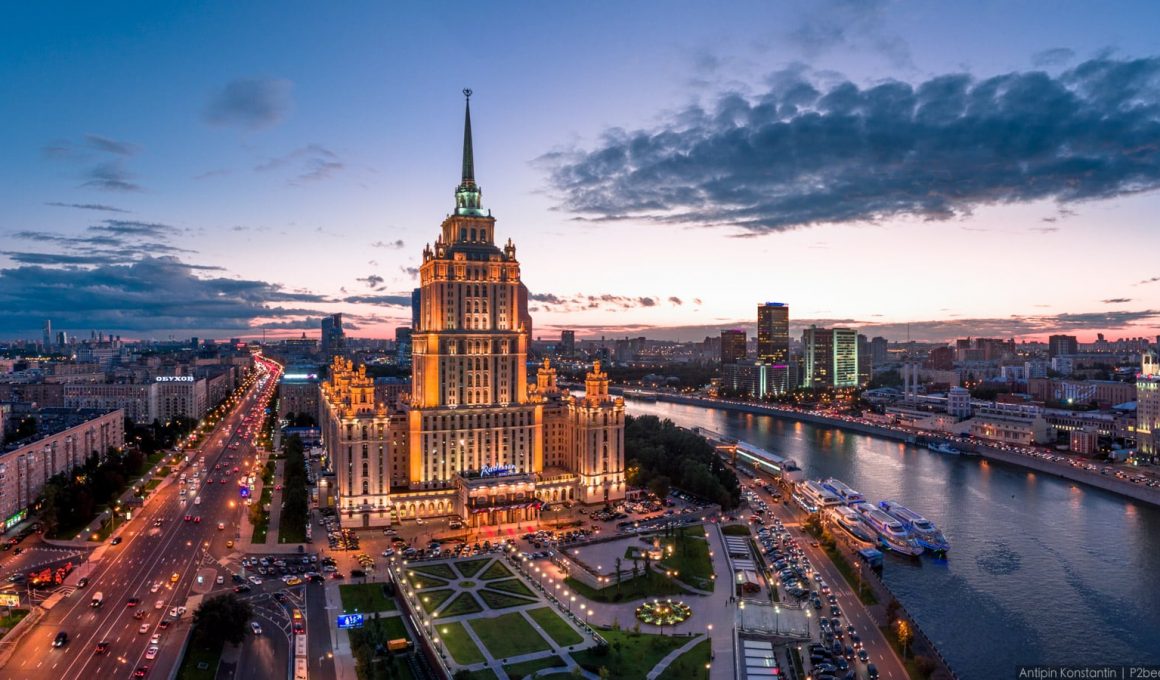
What are the best things to do in Moscow? What to do in Moscow? First, I will list the main places to visit by theme, passing by the must-sees, but also more unusual places in Moscow. Then, I will describe what to see in Moscow in one day and how to visit Moscow in 2, 3, 4, 5 or 6 days. Let’s go!
Good to know. For more information, click on the places to open the dedicated blog posts.
Main places to visit in Moscow & best things to do in Moscow
I worked in Moscow and I loved this city for its dynamism and energy. We find there from time to time to see friends, remember good memories and enjoy this giant city! Then the time has come for us to share with you our practical guide.
TOP 5 must-see places in Moscow
- Moscow Red Square
- St. Basil’s Cathedral
- Cathedral of Christ the Savior
- Bolshoi Theatre
Places of cultural, historical and religious interest in Moscow
- Novodevichy Convent and cemetery
- Tretyakov Gallery
- Pushkin Museum of Fine Arts
- Kremlin Izmaïlovo (pseudo-historic place, recently built in the image of the old, one of the best things to do in Moscow for your Instagram account 😉 )
- Park and ancient village of Kolomenskoye
Visit Moscow of the Soviet era
- Moscow State University and Sparrows Hill
- VDNKh and the Museum of Astronautics, one of the key landmarks of the Soviet era in Moscow
- GULAG Museum
- Metro stations
- The Stalinist skyscrapers, scattered all over the city
Less touristy places in Moscow
- Gorky Park and the GARAGE museum
- The old Krasny Oktyabr factory
- Zaryadye Park
- Center for Contemporary Art, WINZAVOD
- Business center, Moscow City
Main districts of Moscow to visit
- Patriarch Ponds
- Tchistye Prudy
- Kuznetsky most
- Arbat Street
However, regardless of the length of your stay, whether you are going to visit Moscow in 4 days or in 2, you need a visa. The article Obtaining a tourist visa for Russia could then be useful in any case.
What to do and see in Moscow in one day?
List of things to see and do in Moscow in one day:
- Go to Red Square
- Visit St. Basil’s Cathedral
- See Kremlin walls (but not to visit)
- Visit Cathedral of Christ the Savior
- Discover Kuznetsky most districts and see Bolshoi Theatre building
- And if you have time at the end of the day: go to the Sparrows Hill or to the Moscow City for a beautiful view
Things to do in Moscow in 2 days
If you want to visit Moscow in 2 days, there are 2 purposes: do not miss the essential places of Moscow and optimize travel.
- First day: Red Square , Saint Basil’s Cathedral , Zariadye Park, Bolshoi Theatre , Kremlin
- Day 2: Cathedral of Christ the Savior, the former Krasny Oktyabr factory on Balchug Island, Gorky Park, Moscow State University (one of the Seven Sisters buildings ) and Sparrow Hill
As 2 days os really short, be sure to choose an accommodation in the best districts where to stay in Moscow .
Walking on Red Square in Moscow: one of the unmissable things to do in Moscow
Iconic place and one of the must-see places in Moscow and even in Russia! Besides, if there was only one place to visit in Moscow in 2 days, this place would then be Red Square, without hesitation. Therefore, starting the city tour with Red Square is ideal . Several buildings are on the square, but not all of them have to be visited. Check out my blog post about Moscow’s Red Square in detail to learn more and not miss anything.
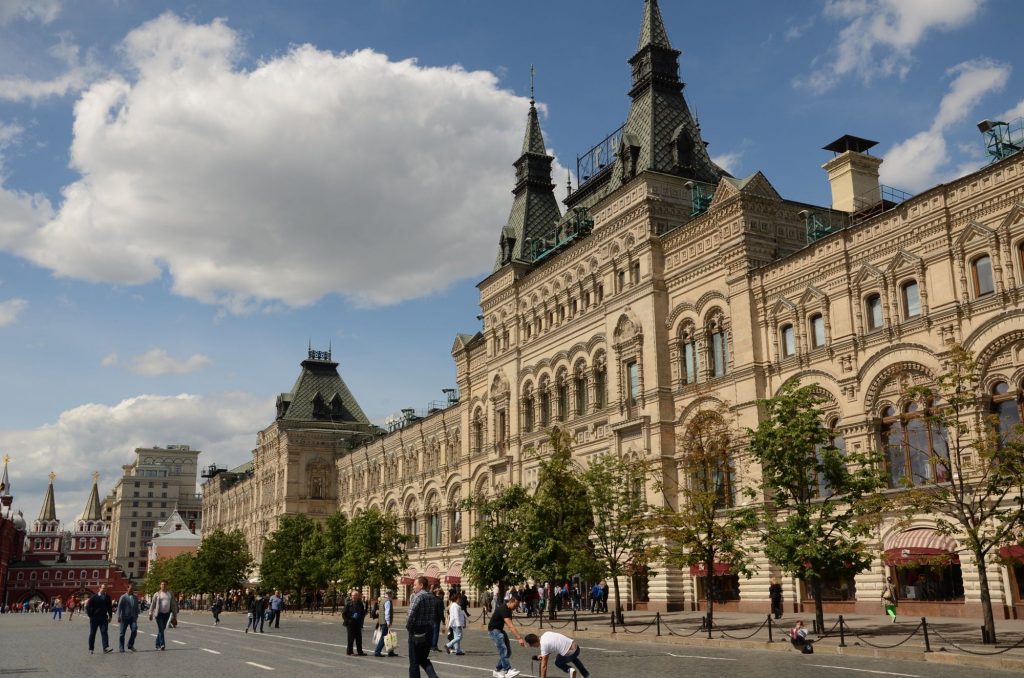
Visiting Saint-Basil’s Cathedral inside
Even more emblematic than Moscow’s Red Square! Built in the middle of the 16th century under the orders of Tsar Ivan Le Terrible, this cathedral is one of the most beautiful monuments of Orthodox art, and definitely one of the unmissable places in Moscow. Visiting Saint-Basil’s Cathedral inside is one of the most beautiful things to do in Moscow!
- Visit estimate time : 1h30
- Entry ticket : 700 RUB. Tickets can be purchased on the cathedral’s official website 45 days before the tour.
- Audio guide (recommended): 500 RUB
- Opening hours : June to August 10 am-6pm; from November to April: 11 am-5pm; May, September, October 11 am-5pm. Cathedral closed on Wednesdays. Entrance is closed 45 minutes before closing.
- Find out more in the dedicated article: Saint Basil’s Cathedral in Moscow
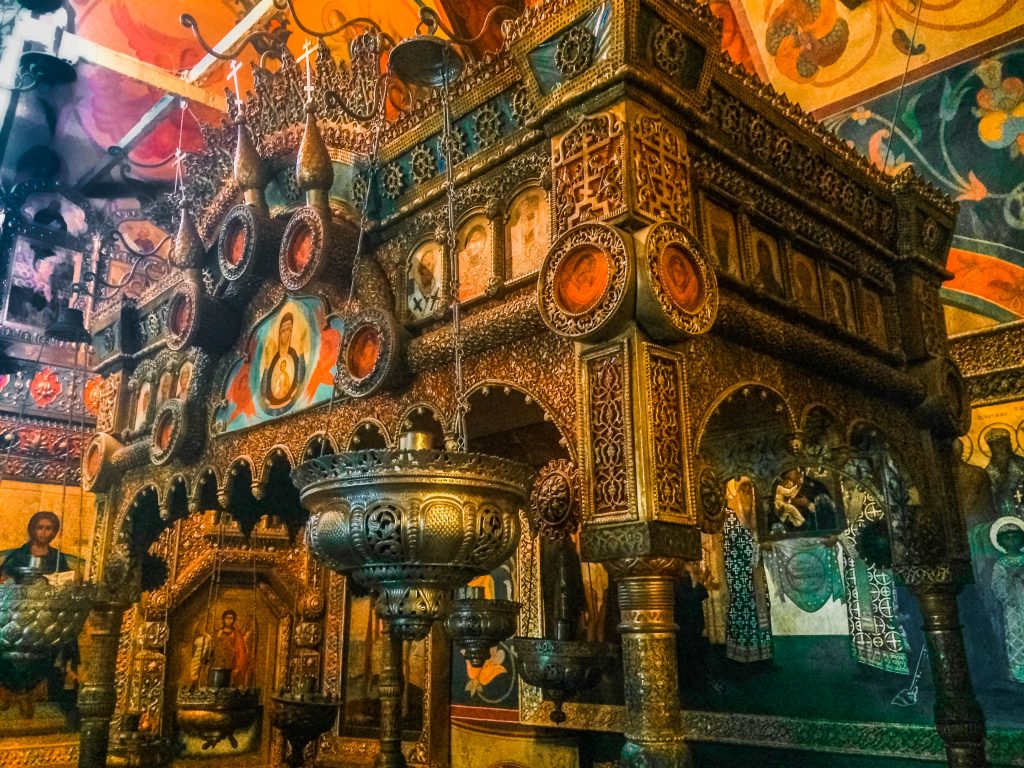
Take a walk in Zariadye park: one of the coolest things to do in Moscow after visiting Red Square
Zaryadie Park is just a 10-minute walk from St. Basil’s Cathedral, so it’s easy to include in your itinerary if you’re going to visit Moscow in 2 days. From its heights, you can see the red walls of the Kremlin. But, the most impressive point of view is the platform which overlooks the Moskva river. A must see! And clearly one of the coolest things to do in Moscow!
- Open 24 hours a day
- Good to know! Park Zaryadye is also a place to visit in Moscow in winter. Find out more here: What to do in Moscow in winter?
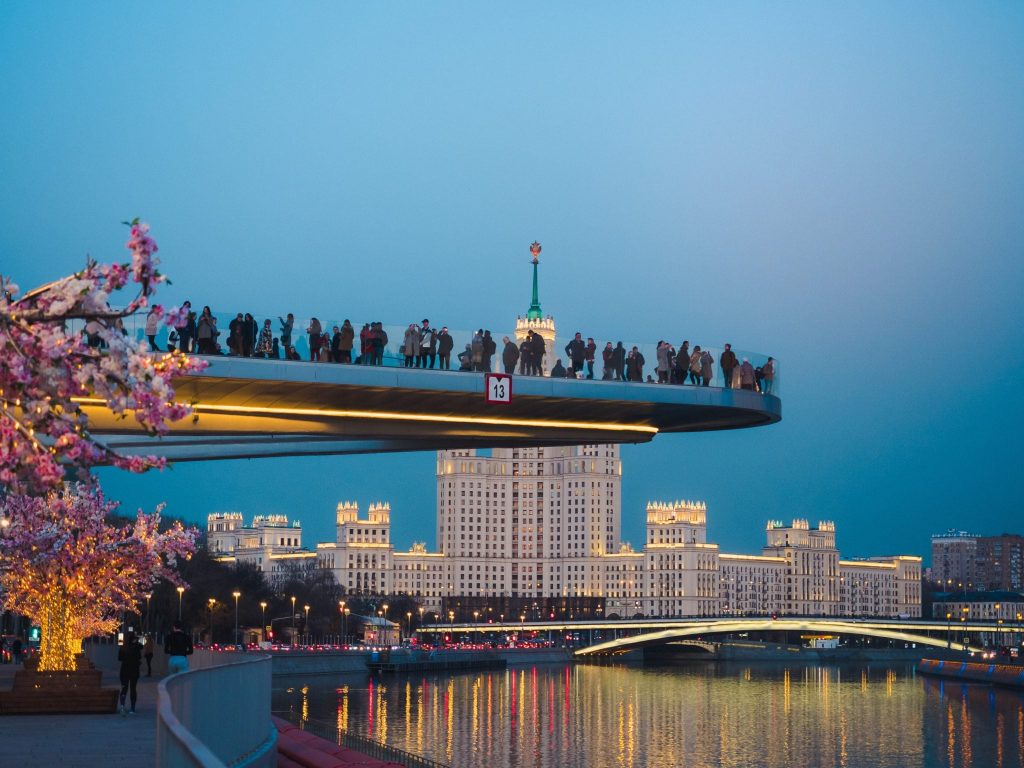
See the Bolshoi Theatre and discover the Kuznetsky Most district
The Bolshoi Theatre is the most famous Russian theater in the world. The most economical way to see a presentation at the Bolshoi Theater is to take the tickets on the theater’s official website in advance, so here is our tutorial to help you: How to buy entrance tickets to the Bolshoi? In addition, several pedestrian or one-way streets
The Bolshoi Theater is the most famous Russian theater in the world. The most economical way to see a presentation at the Bolshoi Theater is to take the tickets on the theater’s official website in advance, so here is our tutorial to help you: How to buy tickets to the Bolshoi? In addition, several pedestrian or one-way streets are located north of the theater. It is therefore very pleasant to find them to leave the main axes of the megalopolis.
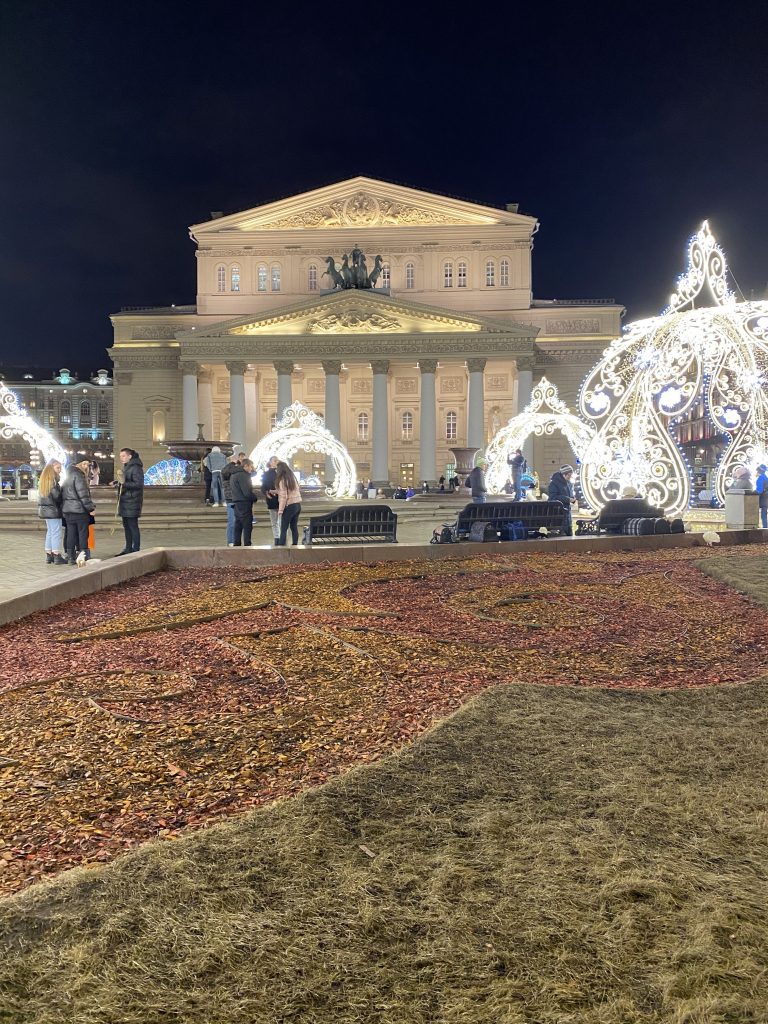
Visit the Moscow Kremlin
Visit Kremlin is on top of things to do in Moscow. A place of power for centuries, the Kremlin then shows us a whole different image when viewed from the inside. If you want to visit Moscow in 2 days, the Kremlin is certainly one of the must-see places in Moscow.
- Opening hours : Daily from 10 a.m. to 5 p.m., except Thursday.
- See our blog post about visiting the Moscow Kremlin
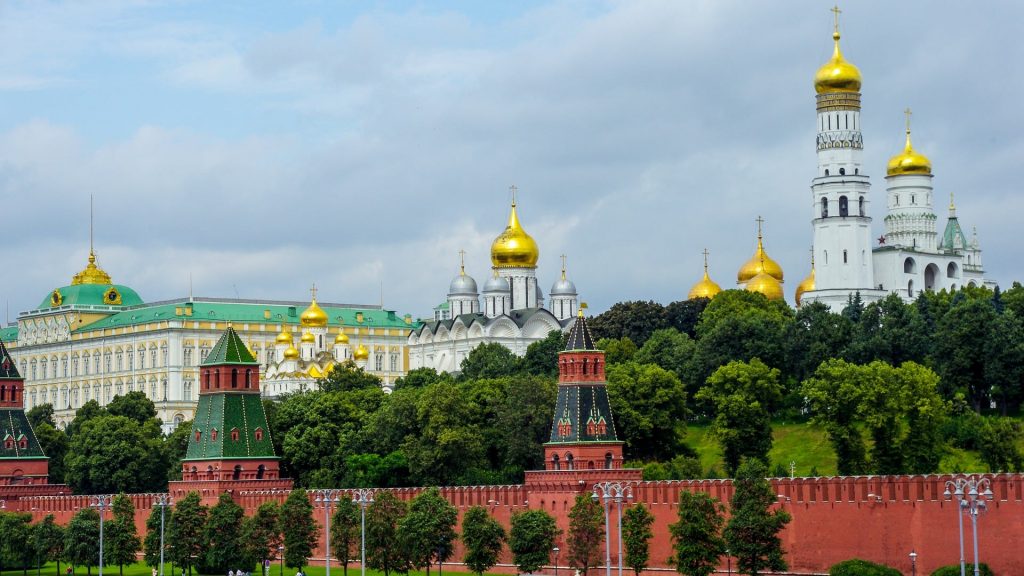
Visit the Cathedral of Christ the Savior
This impressive Moscow Cathedral is the seat of the Russian Orthodox Church. It is a must see if you visit Moscow in 2 days and clearly one of the things to do in Moscow. The Cathedral of Christ the Savior was first built in 1883 in memory of Russia’s victory over Napoleon’s Grand Army. Then in 1931 Stalin ordered its destruction. It was then rebuilt again (identically) only in 2000.
- Where? Ulitsa Volkhonka 15. At the foot of the Kropotkinskaya metro station.
- Opening hours . Daily: 10: 00-17: 00, except Monday: 13: 00-17: 00
- Free entry (some closing restrictions, for example a short)
Good to know! In orthodox religious places, one must avoid excessively uncovered clothing. Women should cover their heads. After visiting the Cathedral of Christ the Savior, you can explore Bolotny Island and Gorky Park. This is one of the routes our guide to Moscow.

The old Krasny Oktyabr factory: one of the coolest things to do in Moscow
If you cross the Moskva River by a pedestrian bridge which is located just in front of the Cathedral of Christ the Savior, you will enjoy a beautiful view of the city and at the same time you can discover Balchug Island. Furthermore, if you want to visit Moscow in 2 days, you can include this island in your itinerary between the cathedral and Gorky park. Here is the old confectionery factory Krasny Oktyabr, which has gradually turned into a fashionable micro-district. There are then some elements of street art, cafes and restaurants and some Moscow bohemian side. At the end of the island you can see a gigantic 98-meter-high monument dedicated to the Russian reforming tsar Pierre The Great.
Good to know! You can find on this island are the trendiest nightclubs in Moscow. On weekends, there are taxi caps after midnight so there are so many people. On the other hand, if you go there in winter and during the day, the island is quite empty and less interesting to see.
Gorky Park is one of the TOP places to visit in Moscow, because it allows you to better understand the life of the locals and their rhythm. In fact, it’s a huge entertainment park. For example, in winter there is a giant ice rink and in summer – free dance or yoga lessons, sandy beaches for playing volleyball, an outdoor cinema. So, like the locals, have a Stakantchik (ice cream or cooked corn), and enjoy the atmosphere of the place: that’s one of the interesting things to do in Moscow to discover the city.
- Where? Krymsky Val 9. 20 minutes’ walk from Krasny Oktyabr, along the quays.
Sparrow Hill and Moscow State University
The Sparrow Hill, Vorobiovy Gori in Russian, is the highest point in Moscow. It is rather known to Russians, but less to travelers. A nice view on Moscow opens from the hill, and in particular on the Luzhniki Stadium. In addition, on the hill itself is the Moscow State University: an impressive skyscraper from the Soviet era.
- How to get there? By bus T7 (35 min) from Oktyaborskaya station, near Gorki Park. By metro (Vorobiovy Gorki station) + climb the hill on foot. On foot along the Moskva along the Gorky Park (1h30) + climb in funiculars.
Good to know! It is possible to cross the Moskva river by funicular. We actually tested it and it was pretty cool! That is one of our favorite things to do in Moscow!
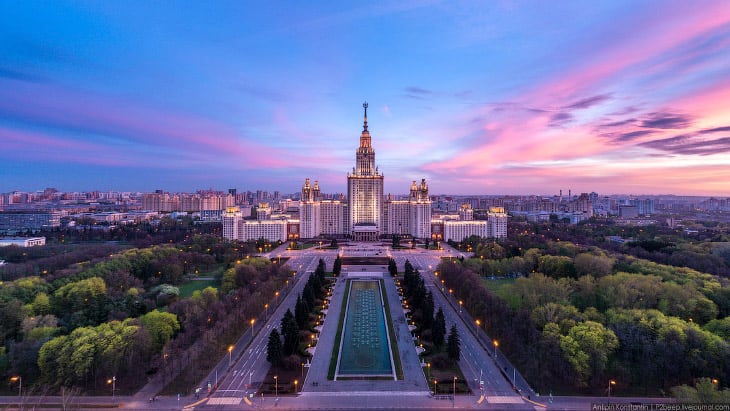
What to do in Moscow in 3 days?
If you are going to visit Moscow in 3 days, it would be interesting to dive into the Soviet era which strongly marked the country and the city. After the Bolshevik Revolution, the capital was transferred from Saint Petersburg to Moscow, in order to mark the change of power. Moscow then became the world showcase for communist ideology. Here are the best things to do in Moscow for 3-day-trip!
VDNKh, visit Moscow of the Soviet era
VDNKh is a large exhibition center in the north of Moscow, where there are still several striking witnesses of the USSR. The most interesting are the Museum of Cosmonauts and the Statue of the Worker and the Kolkhozian , which will certainly impress you with its size!
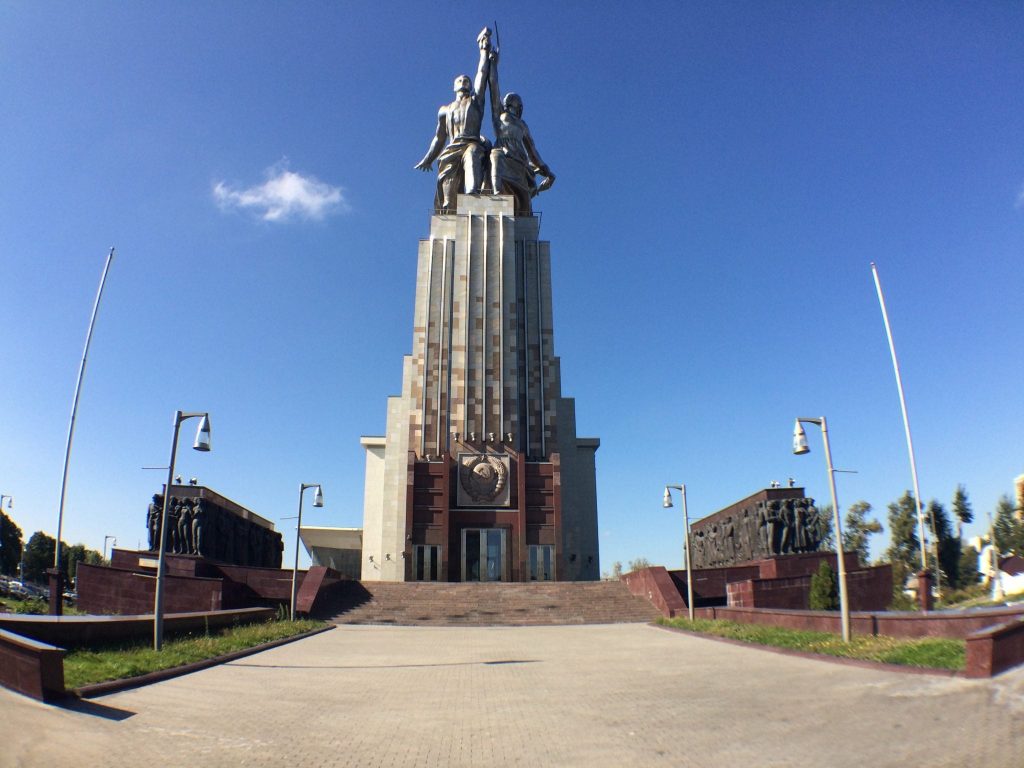
GULAG History Museum
The explanations of the museum are very well done. We really have the feeling of going back in time. If you are going to visit Moscow in 3 days and you are interested in history and this subject in particular, I recommend this museum. Visit the GULAG History Museum is one of the most interesting things to do in Moscow.

Discover the Patriarche Pounds district
It’s a nice neighborhood in Moscow where you can come across rather affluent locals, but not necessarily very bling-bling. Take a walk in this area is really a cool thing to do in Moscow! In addition, the Ponds of Patriarch is one of the places of Bulgakov’s novel “Master and Margarita”. As this is an interesting area to see, we have included it in a walking tour of Moscow. The route ends at the Moscow Kremlin, which is very convenient, because you will be able to visit Moscow in 3 days by optimizing your trips.

What to visit in Moscow in 4 days: TOP things to do in Moscow in 4 days
If you want to visit Moscow in 3 days, you will already see a lot of things. On the other hand, if you stay one more day, you have plenty to do! The Novodevichy Convent, the Tchistie Proudy district and the Izmaylovo Kremlin are very good candidates for you, if you are going to visit Moscow in 4 days.
Visiting Novodevichy Convent in Moscow
The Novodevichy Convent is one of the most brilliant examples of Russian architecture, according to UNESCO. This beautiful complex was built in 1524 and today consists of the convent, but also of a cemetery whose status could be compared to that of Père-Lachaise in Paris. Visiting Novodevichy Convent is one of the great things to do in Moscow, if you want to go a little bit outside of the center!
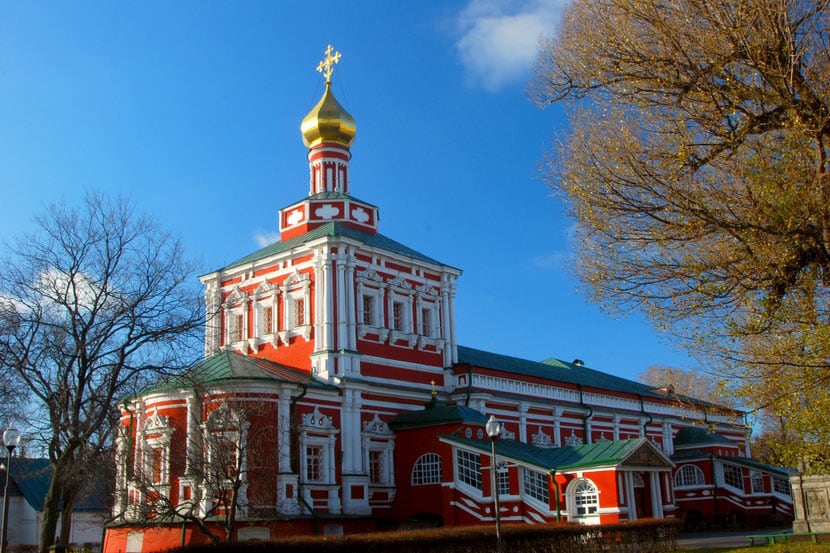
Discovering Tchistye Proudy district
It’s one of the most popular areas of Moscow, with many cafes, restaurants and bars nearby. It is therefore a place to discover if you want to visit Moscow in 4 days. It is just as pleasant for a stroll as for the discovery of local life. For example, in winter the pond turns into an ice rink.
Visiting the Izmaylovo Kremlin, one of the coolest things to do in Moscow!
The Izmaylovo Kremlin is more of a tourist than a historic place. On the other hand, it is a pretty impressive place to discover, especially on weekends. Inside the Kremlin, there is a flea market where you can find a little bit of everything, but mostly good souvenirs to bring from Moscow. For example, chapka, traditional Russian scarves or matryoshka (Russian dolls). Add the Kremlin and the Izmaïlovo market to your itinerary if you are going to visit Moscow in 4 days, because it is a nice and very colorful place! Visiting the Izmailovo Kremlin is one of the things to do in Moscow, if you want to put colors in your Instagram account! 😉

In 4 days, we will have the opportunity to see several Moscow: Classic Moscow, Moscow of old Russia, Soviet Moscow and a little bit of the new Moscow. So what to visit in Moscow on the 5th day of travel?
What to visit in Moscow in 5 days?
Art lovers will be delighted to discover the Tretyakov Gallery and the Pushkin Museum of Fine Arts, while others will prefer to stroll along Arbat Street, see the buildings of Moskva-City or visit Bunker 42.
Admiring Russian art at Tretyakov Gallery
Founded in 1856 by an industrialist and great lover of art, the gallery has grown over the decades, and then bequeathed to the state. Today the collection includes more than 140,000 pieces, 15,000 of which are paintings. Visiting the Tretyakov Gallery is one of the things to do in Moscow if you want to discover Russian art!
- Where? Pereoulok Lavrouchinski 10. A 5-minute walk from Tretiakovskaya station
- Opening hours. Open from 10 a.m. to 6 p.m. until 9 p.m. Thursday and Friday. Closed on Mondays.
- Entry tickets. 500 RUB.
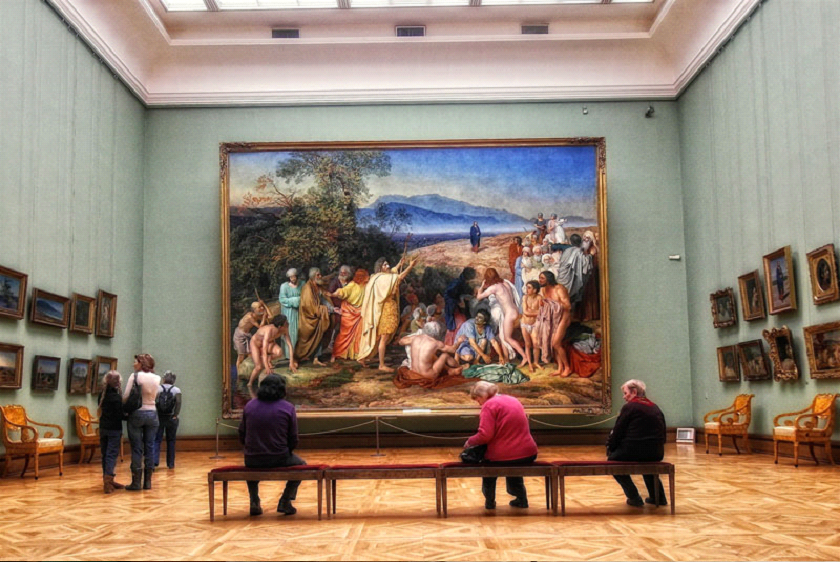
Visiting the Pushkin Museum of Fine Arts
The Pushkin Museum of Fine Arts presents the treasures of ancient Egypt, the paintings of Rembrandt and Cézanne, a fine collection of Impressionism.
- Where? Ulitsa Volkhonka 12
- Opening hours. Daily: 10: 00-20: 00, except Thursday: 11: 00-21: 00. Closed on Mondays. The boxes close an hour before closing.
- Entry tickets. The prices vary according to the collections from 300 to 750 RUB.
Walking on Arbat Street
All Russians know Rue Arbat. So, walking on Arbat street is one of the things to do in Moscow. However, after the years, little by little it became very touristy. This is a pedestrian street only. There are souvenir shops, restaurants and cafes there, but it is no longer the most authentic neighborhood in the city.
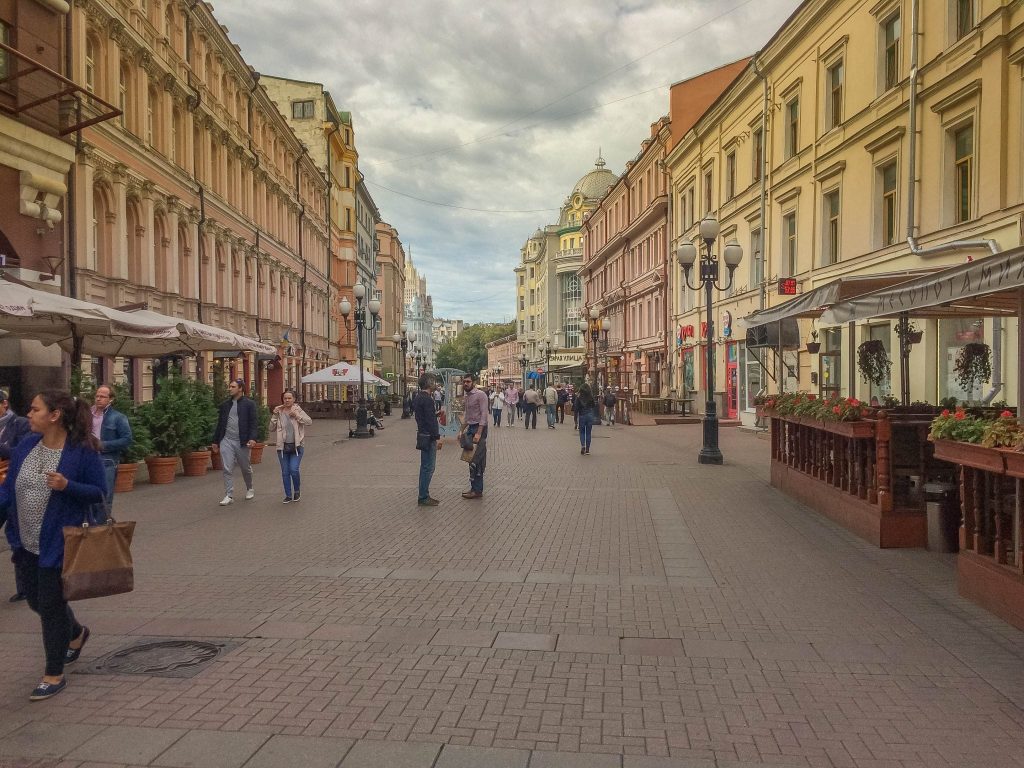
Seeing the buildings of Moskva-City (Moscow City)
Moskva-City is Moscow’s business center, much like Paris’s Defense district. The skyscrapers of Moskva-City are among the tallest in Europe: 373 meters high! Very nice place to see at dusk.
Good to know! You can admire a nice view of Moscow City from the docks of Tarasa Shevchenko. It’s especially beautiful in the evening with all the lights on.
Bunker 42, one of the most unusual things to do in Moscow
Bunker 42 is a secret military complex which was to be used by the Soviets in the event of a nuclear attack: a space of 7000 m² 65 meters underground!
- Where? 5 Kotelnitcheski Lane, 11.
- Prices. 2200 RUB per person
- Opening hours. Open daily from 10 a.m. to 8 p.m.
- Restaurant inside. Original, but rather a tourist trap.
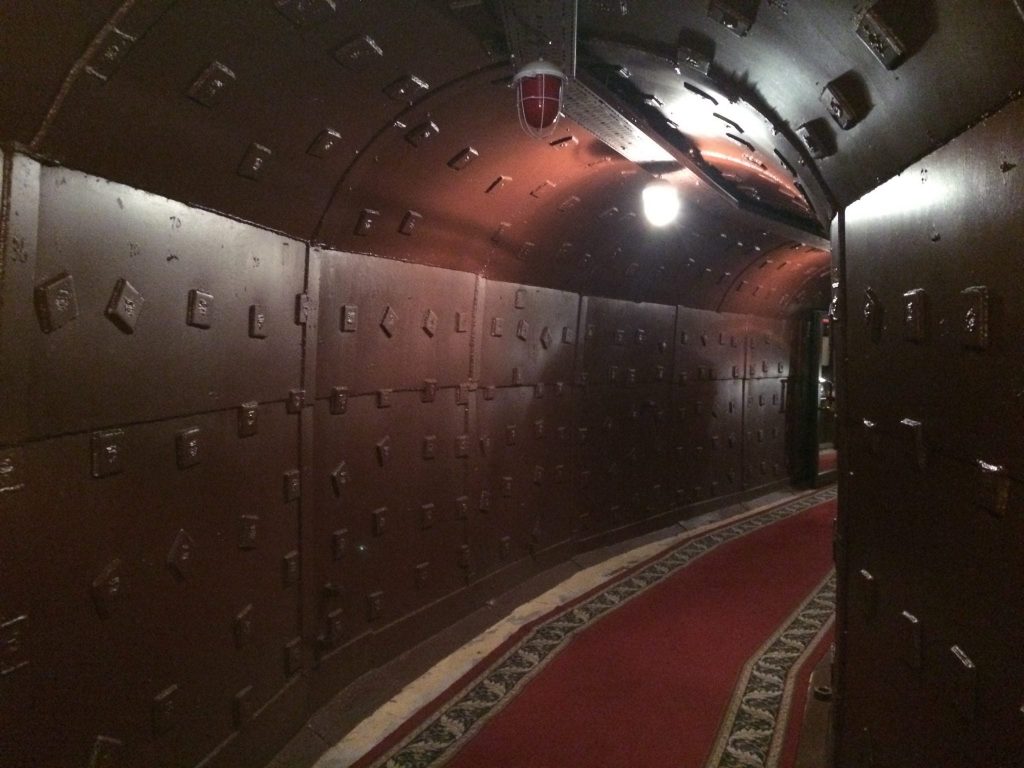
What to visit in Moscow in 6 days or more?
There are still so many places to see, because Moscow is a big megalopolis and there is always something exciting to do there. For example: the ancient Kolomenskoye village or the WINZAVOD contemporary art center .
If you are interested in history and want to see Russian cities on a rather “human scale”, it would certainly be interesting for you to discover the cities of the Golden Ring . For example, it is very easy to get to Sergey Posad from Moscow (less than 2 hours in train). Visiting the Golden Ring is one of the best things to do in Moscow if you are staying more than a 5-6 days.
There are still plenty of places to see in Moscow, however I did my best to list here the best things to do in Moscow, what to see in Moscow in one day, but also in 2, 3, 4 or 5 days in Moscow!
Moscow travel tips:
- Airport transfer: how to go to Moscow?
- Where to stay in Moscow (hotels, districts)?
- Tourist voucher for Russian visa
- Christmas and New Year in Moscow
- What is the best time to visit Moscow?
Leave a Reply Cancel reply
Your email address will not be published. Required fields are marked *
Save my name, email, and website in this browser for the next time I comment.
Novodevichy Convent and cemetery in Moscow: tickets, cemetery map
Hermitage museum in saint petersburg: tickets, best time to visit, you may also like.
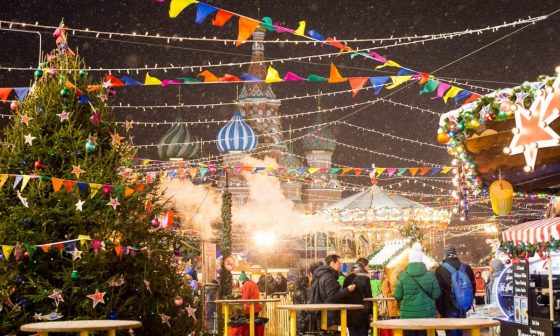
Moscow in winter | What to do in Moscow in winter? How to dress?
- October 1, 2023
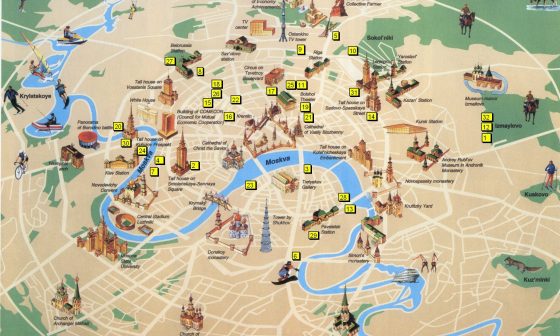
Free Moscow map in English: Moscow metro map and city centre map
- December 12, 2023

- August 26, 2023

Moscow transport: metro, bus & taxi in Moscow | How does it work?
- August 15, 2023
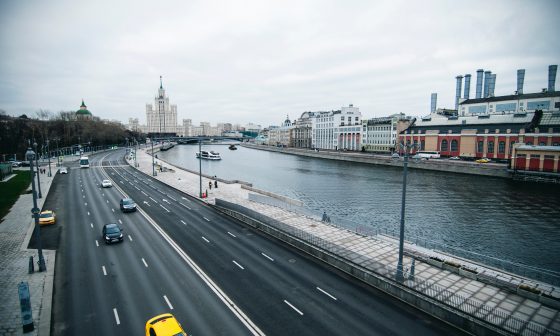
Weekend in Moscow | What to do in Moscow for a long weekend?
- June 22, 2023
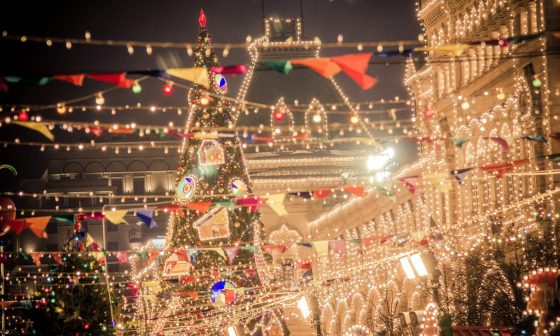
Christmas and New Year in Moscow: best markets and decorations to see
- September 18, 2023
Showtimes & Tickets
Museum of the moving image.
- Wheelchair Accessible
Movies Near You ( 55 )
Favorite theaters, theaters near you ( 39 ), within 5 miles (3) .
- AMC Clifton Commons 16
- Secaucus Kerasotes ShowPlace 14
- Williams Center Cinema
Within 10 miles (29)
- Alamo Drafthouse Cinema - Lower Manhattan
- AMC 19th St. East 6
- AMC 34th Street 14
- AMC 84th Street 6
- AMC DINE-IN Shops at Riverside 9
- AMC Dine-in Theatres Essex Green 9
- AMC Empire 25
- AMC Garden State 16
- AMC Kips Bay 15
- AMC Lincoln Square 13
- AMC Magic Johnson Harlem 9
- AMC Newport Centre 11
- AMC Orpheum 7
- AMC Ridgefield Park 12
- AMC Village 7
- AMC Wayne 14
- Angelika Film Center New York
- Cinemark Willowbrook Mall and XD
- City Cinemas Cinemas 123
- City Cinemas Village East Cinema
- Concourse Plaza Multiplex Cinemas
- Film at Lincoln Center - Walter Reade Theater
- Firehouse: DCTV's Cinema for Documentary Film
- iPic Theaters Hudson Lights
- LOOK Dine-In Cinemas - W57TH
- Regal Battery Park
- Regal Union Square ScreenX & 4DX
- Roxy Cinema Tribeca
Within 20 miles (7)
- Alamo Drafthouse Cinema - Downtown Brooklyn
- AMC East Hanover 12
- AMC Jersey Gardens 20
- AMC Mountainside 10
- College Point Multiplex Cinemas
- iPic Theaters at Fulton Market
- Landmark Closter Plaza
Recently Viewed

The 49 best photo spots in Moscow
Navigate forward to interact with the calendar and select a date. Press the question mark key to get the keyboard shortcuts for changing dates.
Navigate backward to interact with the calendar and select a date. Press the question mark key to get the keyboard shortcuts for changing dates.

1 The Moscow Kremlin
2 Red Square

3 Gorky Central Park of Culture and Leisure
4 st. basil's cathedral, 5 bolshoi theatre.

Track your travel spending and split costs with friends
Plan your trip. Keep your budget organized. Split the cost between tripmates. Wanderlog does it all.

Don’t forget to pack anything
Stay organized with a to-do list, packing list, shopping list, any kind of list.

16 Grand Kremlin Palace
17 state historical museum, 18 public museum of the moscow metro, 19 cafe pushkin, 20 armoury chamber, 21 vorob'yevy gory, 22 all-russian exhibition center, 23 moscow zoo, 24 alexander garden, 25 sokolniki park.

All travel reservations in 1 place
Never dig through your emails again — access all your flights, lodging, and any reservations in 1 place.

26 Muzeon Park of Arts
27 ostankino television tower, 28 patriarch's ponds, 29 neskuchny garden, 30 museum of soviet arcade games, 31 dormition cathedral, 32 the carlton, moscow, 33 monument to minin and pozharsky, 34 annunciation cathedral, 35 russian state library.

Perfect for road trips
See time and distance between places, and optimize your route to get the most of your day.

36 Winzavod
37 museum of the history of vodka, 38 komsomolskaya, 39 moscow state university, 40 poklonnaya hill, 41 ostrov mechty (dream island), 42 moskva river, 43 business district "moscow silk", 44 vorob'yevy gory, 45 memorial eternal flame.
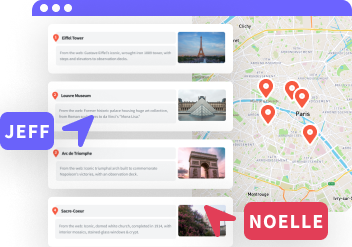
Collaborate with friends in real time
Plan along with your friends with live syncing and collaborative editing.

46 STREET ADVENTURE
47 underground gallery, 48 old arbat hostel, 49 moscow school of painting, sculpture and architecture, top searches in moscow, popular road trips from moscow, what's the weather like in moscow.
It depends on when you visit! We've compiled data from NASA on what the weather is like in Moscow for each month of the year: see the links below for more information.
- Weather in Moscow in January
- Weather in Moscow in February
- Weather in Moscow in March
- Weather in Moscow in April
- Weather in Moscow in May
- Weather in Moscow in June
- Weather in Moscow in July
- Weather in Moscow in August
- Weather in Moscow in September
- Weather in Moscow in October
- Weather in Moscow in November
- Weather in Moscow in December
All road trips from Moscow
- Moscow to London drive
- Moscow to Paris drive
- Moscow to St. Petersburg drive
- Moscow to Berlin drive
- Moscow to Prague drive
- Moscow to Amsterdam drive
- Moscow to Budapest drive
- Moscow to Vienna drive
- Moscow to Istanbul drive
- Moscow to Florence drive
- Moscow to Venice drive
- Moscow to Stockholm drive
- Moscow to Milan drive
- Moscow to Krakow drive
- Moscow to Copenhagen drive
- Moscow to Warsaw drive
- Moscow to Helsinki drive
- Moscow to Munich drive
- Moscow to Brussels drive
- Moscow to Tallinn drive
- Moscow to Riga drive
- Moscow to Oslo drive
- Moscow to Turin drive
- Moscow to Hamburg drive
- Moscow to Vilnius drive
- Moscow to Yaroslavl drive
- Moscow to Nizhny Novgorod drive
- Moscow to Kyiv drive
- Moscow to Tula drive
- Moscow to Bruges drive
Explore nearby places
- Likino-Dulevo
- Ivanteyevka
- Orekhovo-Zuevo
- Semyonovskoye
- Ivanovskoye
- Rumyantsevo
- Dzerzhinsky
- Sovkhoz Imeni Lenina
- Dolgoprudny
All related maps of Moscow
- Map of Moscow
- Map of Danki
- Map of Shatura
- Map of Likino-Dulevo
- Map of Uspenskoye
- Map of Gorskoye
- Map of Ivanteyevka
- Map of Reutov
- Map of Domodedovo
- Map of Peresvet
- Map of Vorobyovo
- Map of Bronnitsy
- Map of Orekhovo-Zuevo
- Map of Moskovsky
- Map of Semyonovskoye
- Map of Izmaylovo
- Map of Nikolskoye
- Map of Ivanovskoye
- Map of Marfino
- Map of Govorovo
- Map of Nagornoye
- Map of Mosrentgen
- Map of Bratsevo
- Map of Rumyantsevo
- Map of Mytishchi
- Map of Putilkovo
- Map of Razvilka
- Map of Khimki
- Map of Dzerzhinsky
- Map of Sovkhoz Imeni Lenina
- Map of Dolgoprudny
Moscow throughout the year
- Moscow in January
- Moscow in February
- Moscow in March
- Moscow in April
- Moscow in May
- Moscow in June
- Moscow in July
- Moscow in August
- Moscow in September
- Moscow in October
- Moscow in November
- Moscow in December
Looking for day-by-day itineraries in Moscow?
Get inspired for your trip to Moscow with our curated itineraries that are jam-packed with popular attractions everyday! Check them out here:
- 1-Day Moscow Itinerary
- 2-Day Moscow Itinerary
- 3-Day Moscow Itinerary
- 4-Day Moscow Itinerary
- 5-Day Moscow Itinerary
Best attractions in nearby cities
- Top things to do and attractions in Khimki
Best restaurants in nearby cities
- Where to eat: the best restaurants in Mytishchi
- Where to eat: the best restaurants in Khimki

- Itinerary + map in one view
- Live collaboration
- Auto-import hotels and reservations
- Optimize your route
- Offline access on mobile
- See time and distance between all your places

IMAGES
VIDEO
COMMENTS
Before your visit, check the Museum's visitor safety page for the latest on mask-wearing and other guidelines. A one-of-a-kind destination for audiences of all ages and interests, Museum of the Moving Image is the country's only museum dedicated to the art, history, technique, and technology of the moving image in all its forms. ...
The Museum is open. BOOK YOUR TICKET TO VISIT THE MUSEUM (AVAILABLE THROUGH JANUARY 2, 2022). Museum of the Moving Image is the country's only museum dedicated to the art, history, technique, and technology of the moving image in all its forms. The Museum is a one-of-a-kind destination for audiences of all ages and interests, from connoisseurs ...
Great visit to the Museum of the Moving Image. Especially loved the Jim Henson exhibit, the retro video games (if you buy tokens, remember to keep one as a souvenir!), the full Behind the Screen exhibit with SO much interesting stuff, the Blade Runner miniature and the short film "Mr. Yellow Sweatshirt".
Hours, Rates, and Policies. A Note about Safety COVID-19 vaccination (ages 12+) and masks (ages 2+) are required for all visitors. Please review our visitor guidelines before you visit. Museum Hours (through December 19, 2021): Friday: 2:00-8:00 p.m. Saturday and Sunday: 12:00-6:00 p.m. Holiday Hours (December 24 through January 2, 2022): Friday, Dec. 24 (Christmas Eve): OPEN 12:00-6:00 ...
Unstable Evidence on Screen New exhibition explores the emergence of "deepfake" video, anchored by the installation In Event of Moon Disaster Opens Dec 18 See It Big! The Museum's signature series focuses on films that push cinematic style into excess Through Dec 19 Animating The Grinch Sketches, animation cels, and backgrounds from Chuck Jones's 1966 adaptation of the classic book by Theodor ...
Highlights. The Museum's main exhibition, Behind the Screen, takes on the immense task of capturing the process and history of film and television.The two-floor display includes a mix of artifacts, information and interactive installations. For example, you might see an assortment of real motion picture cameras dating back to the late 1800s through today while also learning how the devices work.
The Museum of the Moving Image is a media museum located in a former building of the historic Astoria Studios (now Kaufman Astoria Studios), in the Astoria neighborhood of Queens in New York City.The museum originally opened in 1988 as the American Museum of the Moving Image, and in 1996, opened its permanent exhibition, "Behind the Screen," designed by Ali Höcek of AC Höcek Architecture LLC.
Mission. Museum of the Moving Image advances the understanding, enjoyment, and appreciation of the art, history, technique, and technology of film, television, and digital media by presenting exhibitions, education programs, significant moving-image works, and interpretive programs, and collecting and preserving moving-image related artifacts.
This is the first major survey of the pioneering net-artist and sculptor Auriea Harvey. The exhibition will feature more than 40 of Harvey's works, including her groundbreaking net-based interactives, video games, and augmented-reality sculptures from a career spanning nearly four decades. Tue 16. Feb 29 - Sep 8.
Address. 36-01 35th Ave, Queens, NY 11106, USA. Phone +1 718-777-6800. Web Visit website. The Museum of the Moving Image is all about what goes on the screen: film, television, and digital media. It's family friendly, and visitors of all ages will love learning about the history of films as well as what is happening in the contemporary world.
Take the E to Queens Plaza. Change to the M (weekdays only) or R and proceed to Steinway Street. Follow the directions from the 34 Avenue exit as detailed above. Take the W (weekdays only) or N to 36 Ave (Astoria). Walk East along 36 Ave five blocks to 36 Street. Turn left and walk one block to 35 Avenue.
Discounts for Museum Members. Free admission to the Museum, including unlimited admission to the Museum's galleries. Discounted tickets ($7) to regular screenings for Members. A 15% discount on nearby parking at PV Parking Corp (34-11 Steinway Street). Your parking stub will need to be validated at the Museum's front desk.
Let's explore one of NYC's best museums that most don't visit: The Museum of the Moving Image.Located in 36-01 35th Ave, Queens, NY 11106: https://movingimag...
22. Entertainment Center Arbat 16. We decided to visit the Maze of Fear (18+), the Mirror Maze (18+ on New Arbat, 0+ on Old Arbat), The Museum of... 23. Bunker-42 Cold War Museum at Taganka. ... which you need to get the history of the bunker from WWII/Great Patriotic War period to the more recent history. 24.
The museum displays tiny handwritten copies of Solzhenitsyn's books, circulated secretly; film negatives of letters smuggled to the West; and beads made of compacted bread that he used to ...
Visit Kremlin is on top of things to do in Moscow. A place of power for centuries, the Kremlin then shows us a whole different image when viewed from the inside. If you want to visit Moscow in 2 days, the Kremlin is certainly one of the must-see places in Moscow. Opening hours: Daily from 10 a.m. to 5 p.m., except Thursday.
Museum of the Moving Image Showtimes on IMDb: Get local movie times. Menu. Movies. Release Calendar Top 250 Movies Most Popular Movies Browse Movies by Genre Top Box Office Showtimes & Tickets Movie News India Movie Spotlight. TV Shows.
The Tsaritsyno Museum-Reserve is a beautiful palace and park in south Moscow that was commissioned in 1775. Recent renovations have restored its lavish interior to its former glory, with elegant halls and beautiful staircases. The museum houses a range of historical artifacts, including paintings, furniture, and sculptures.
go and capture all the boys disturbing people's that are working under the rising sun like Okada man, truck labour, etc